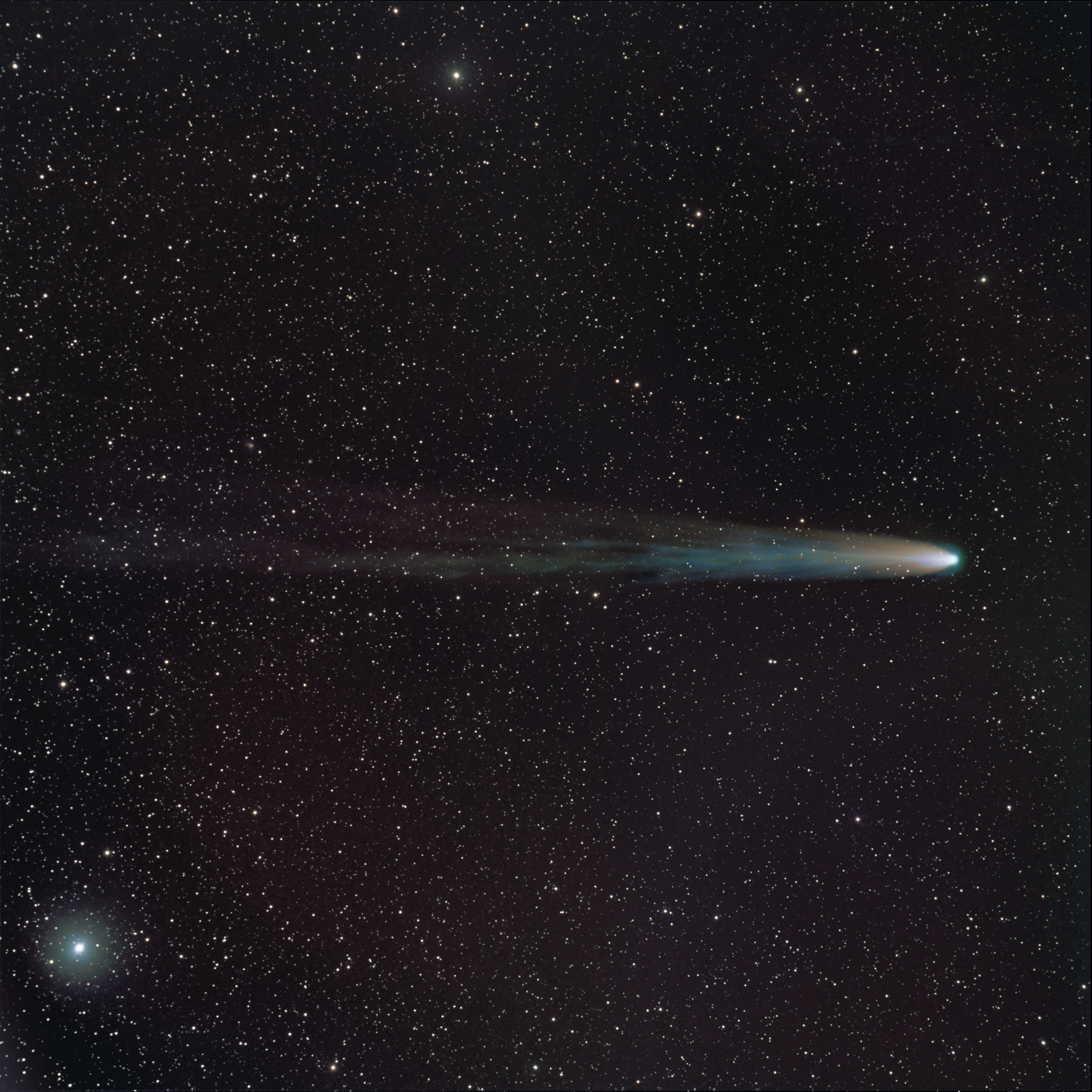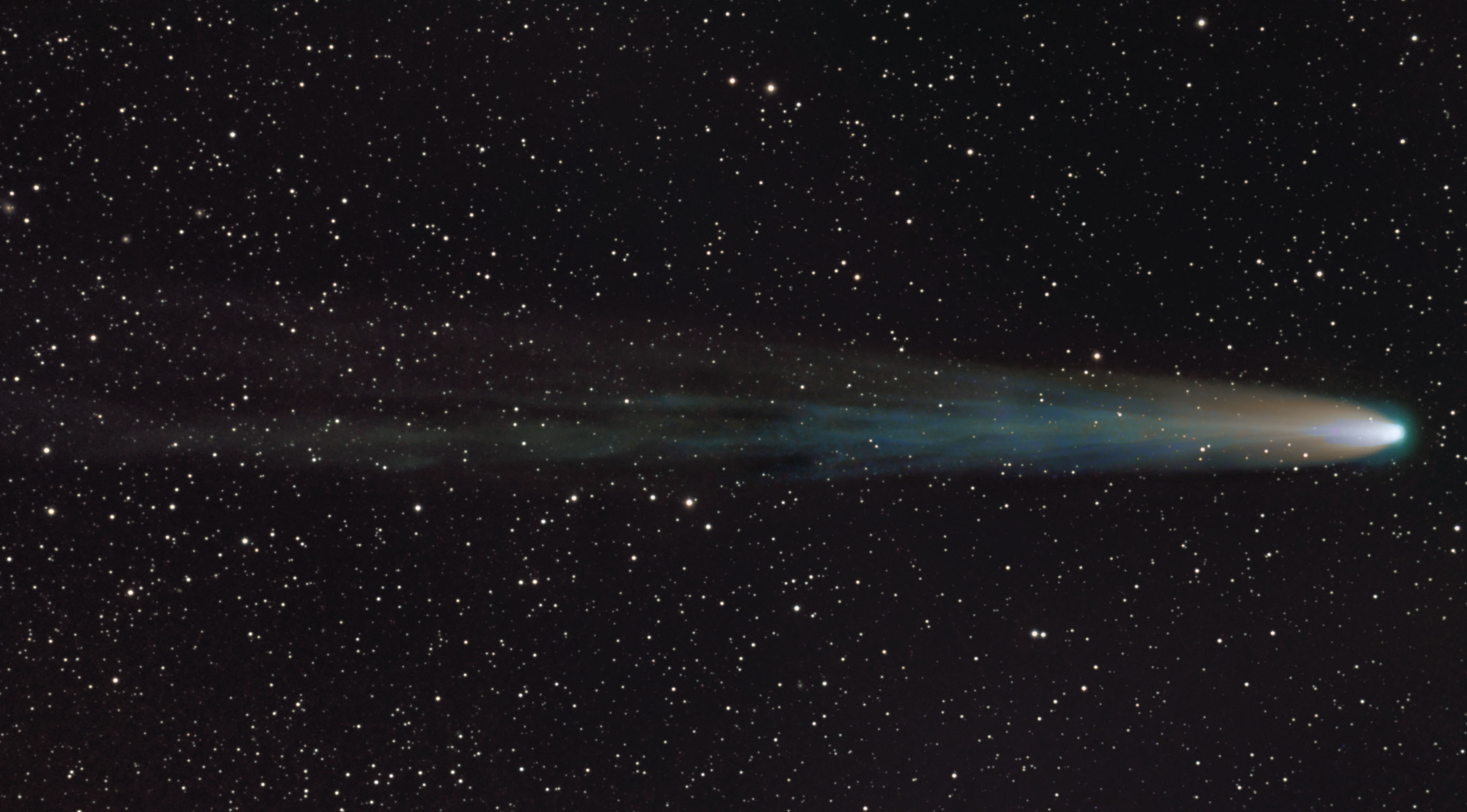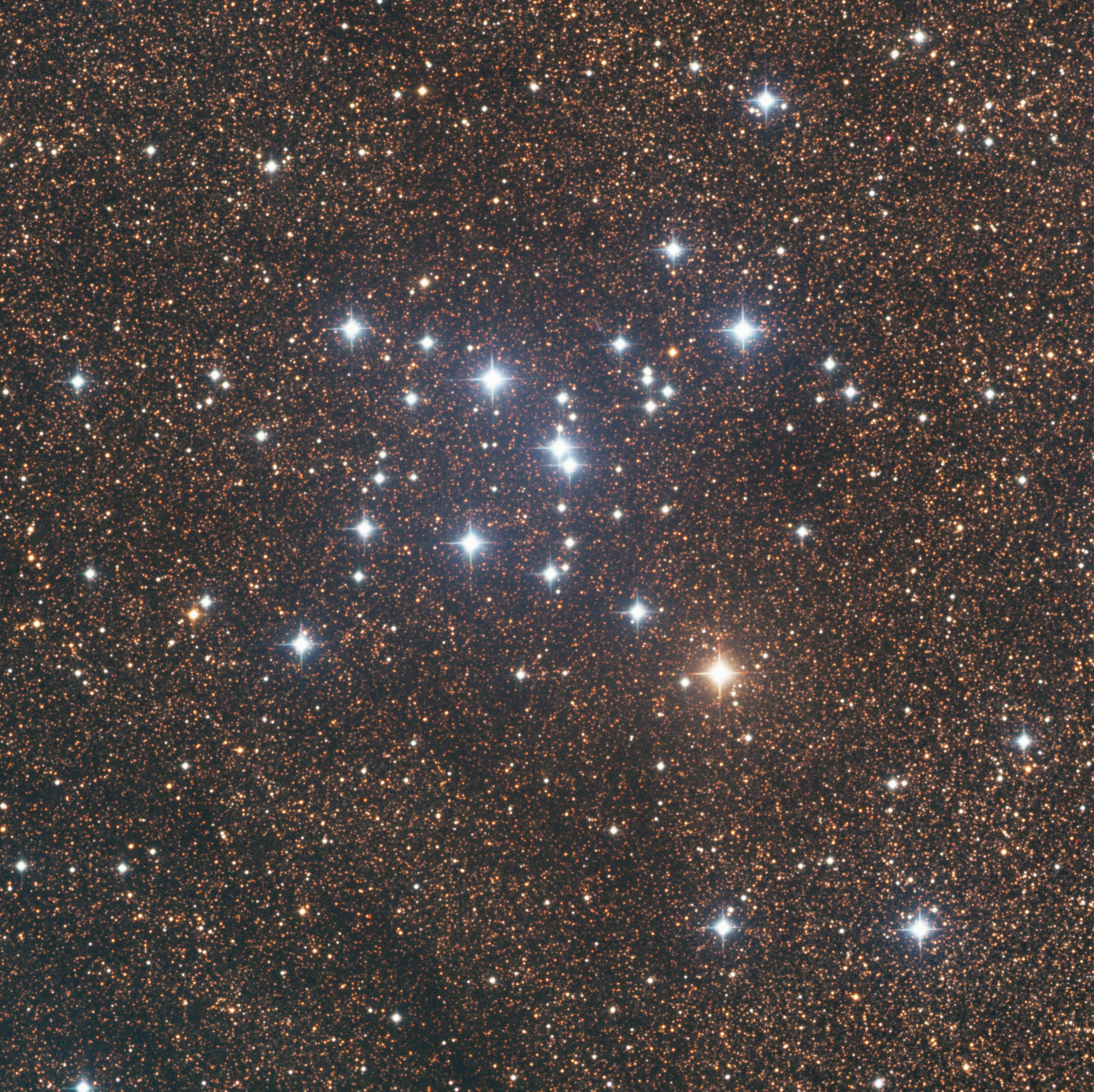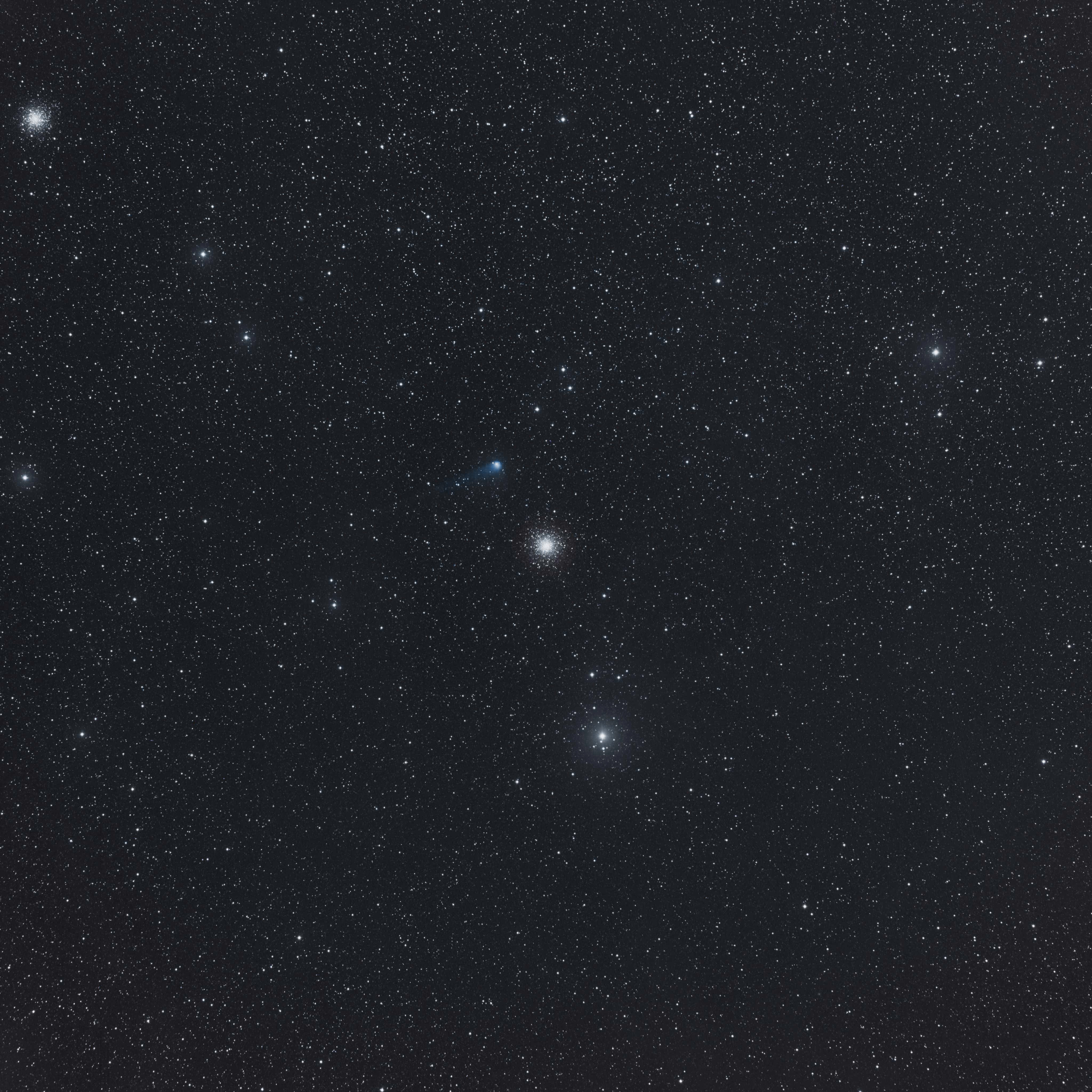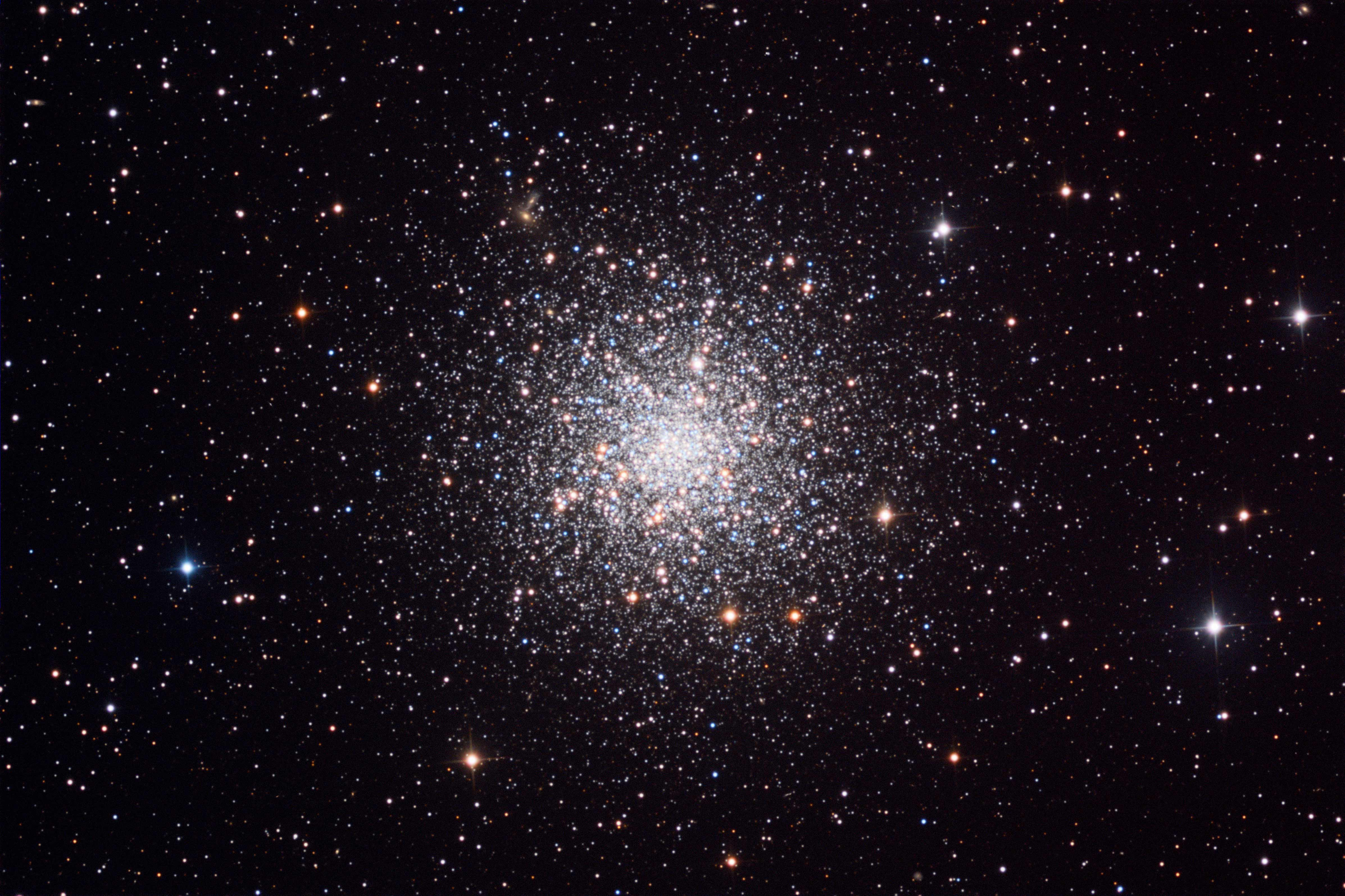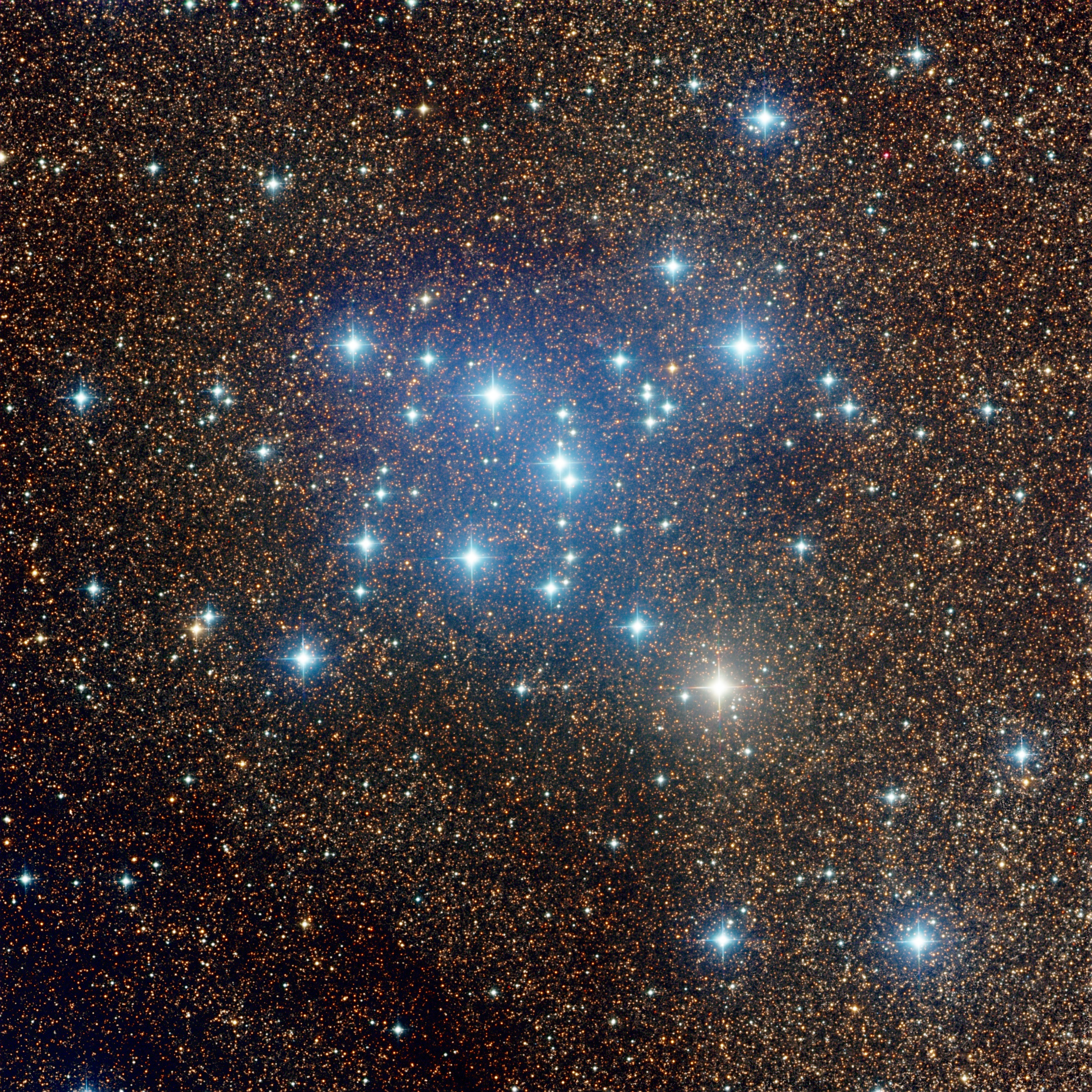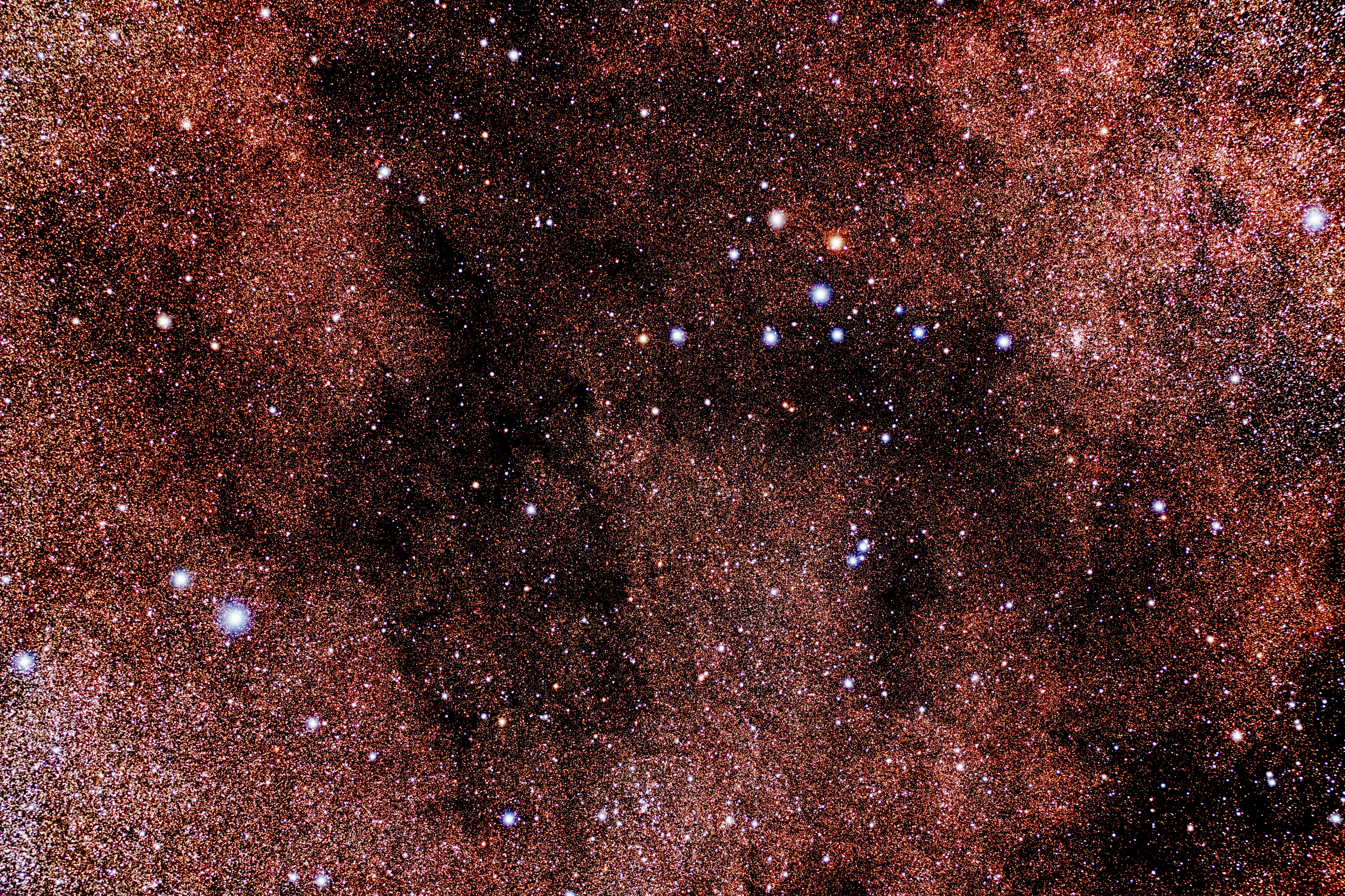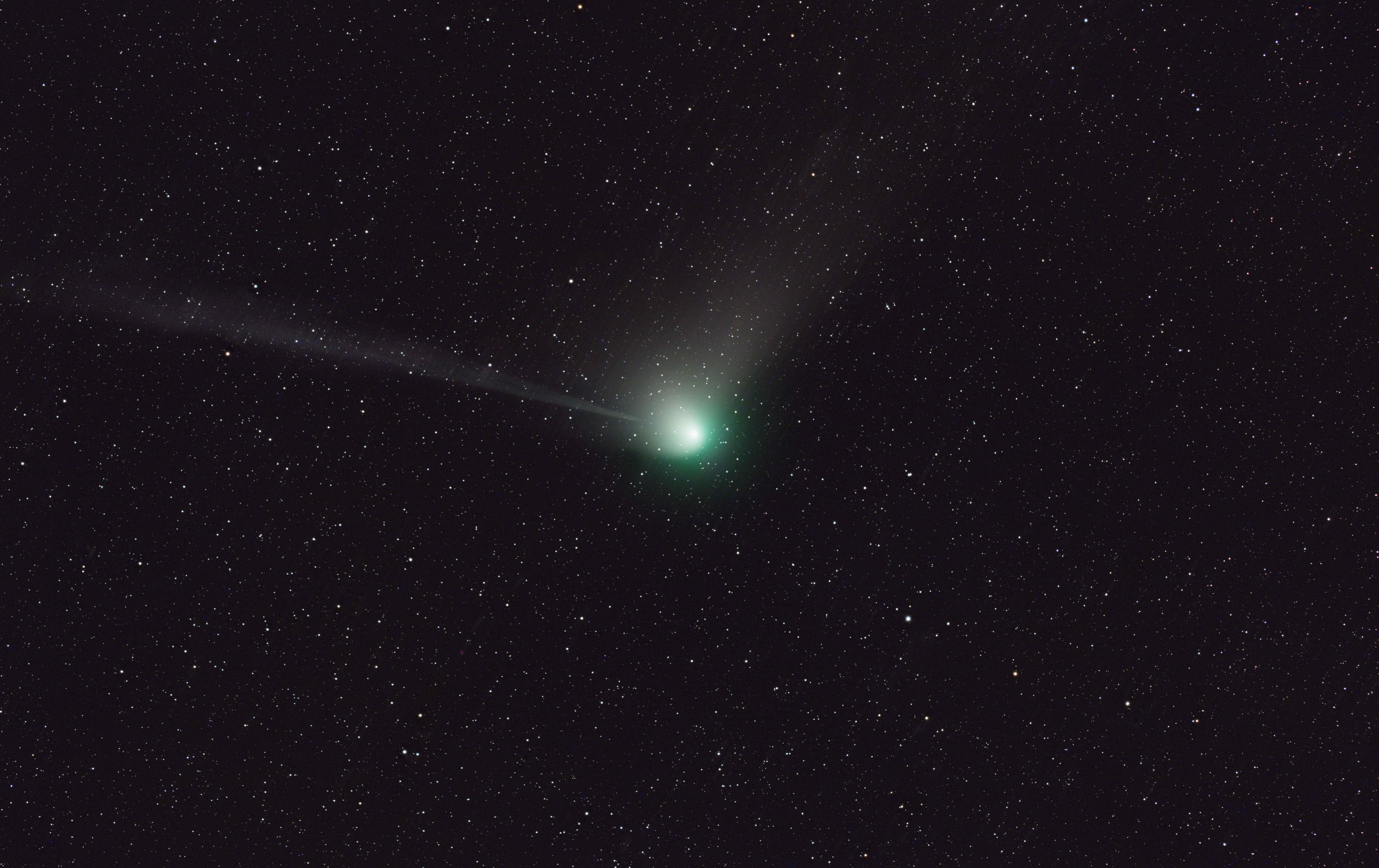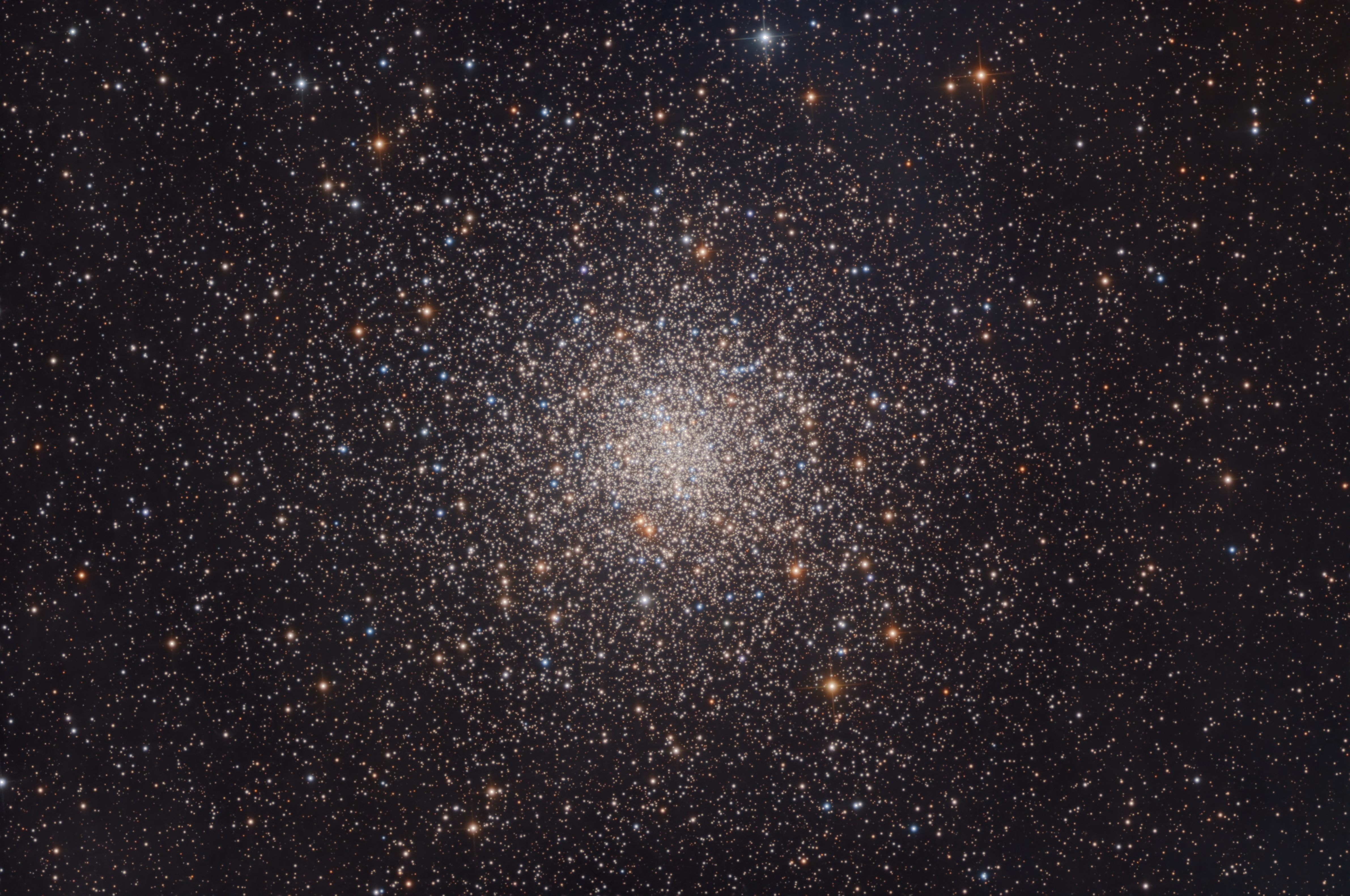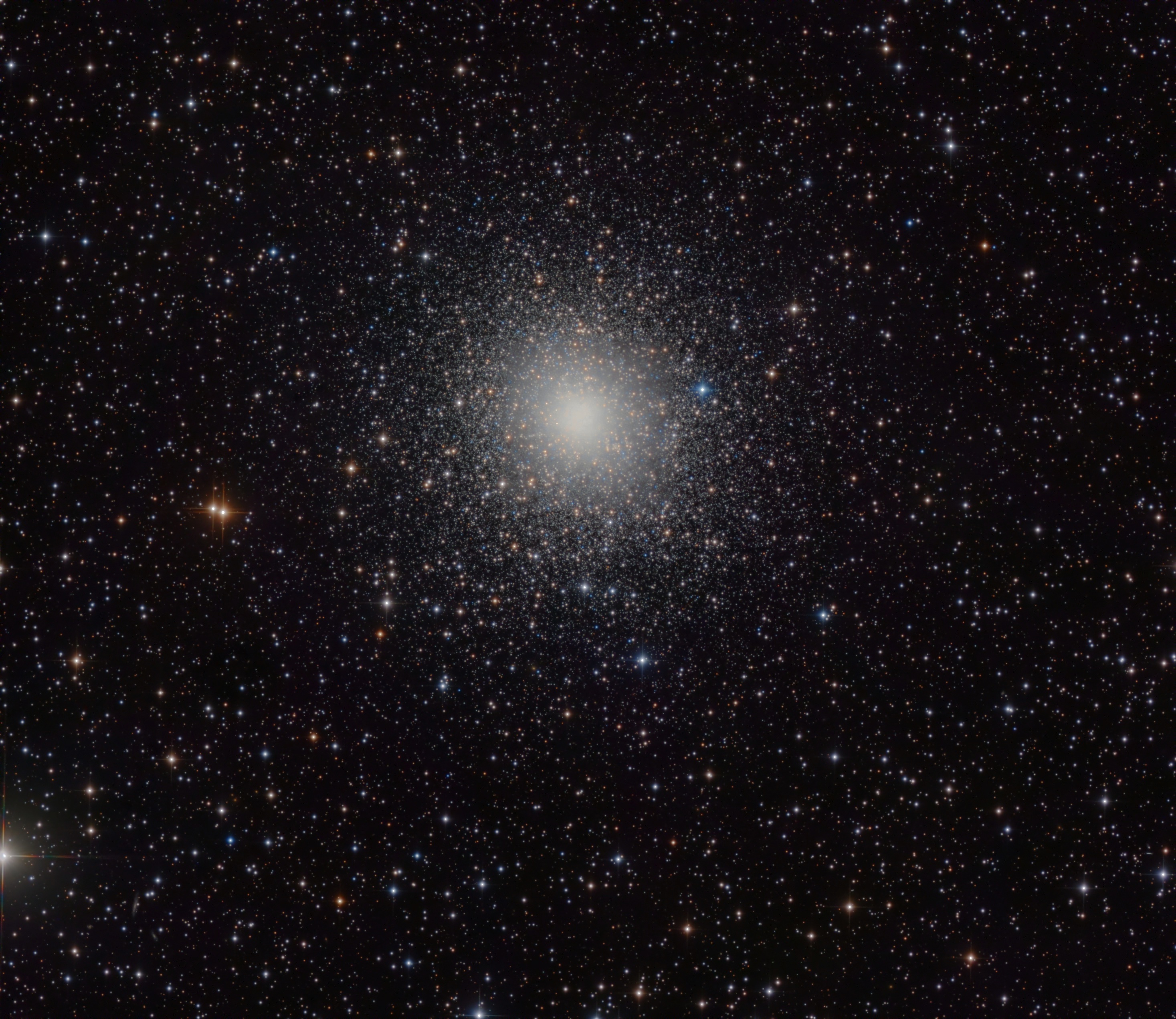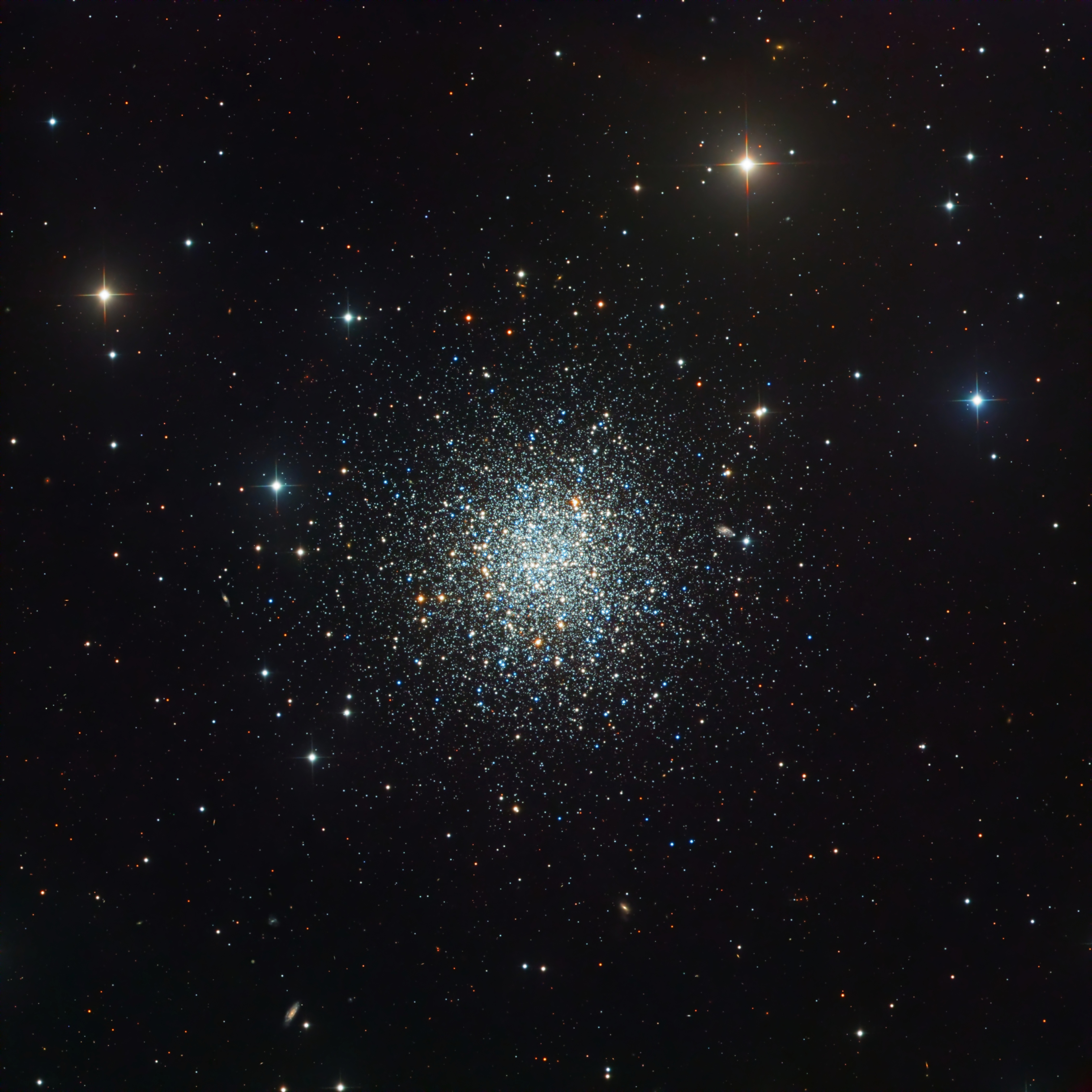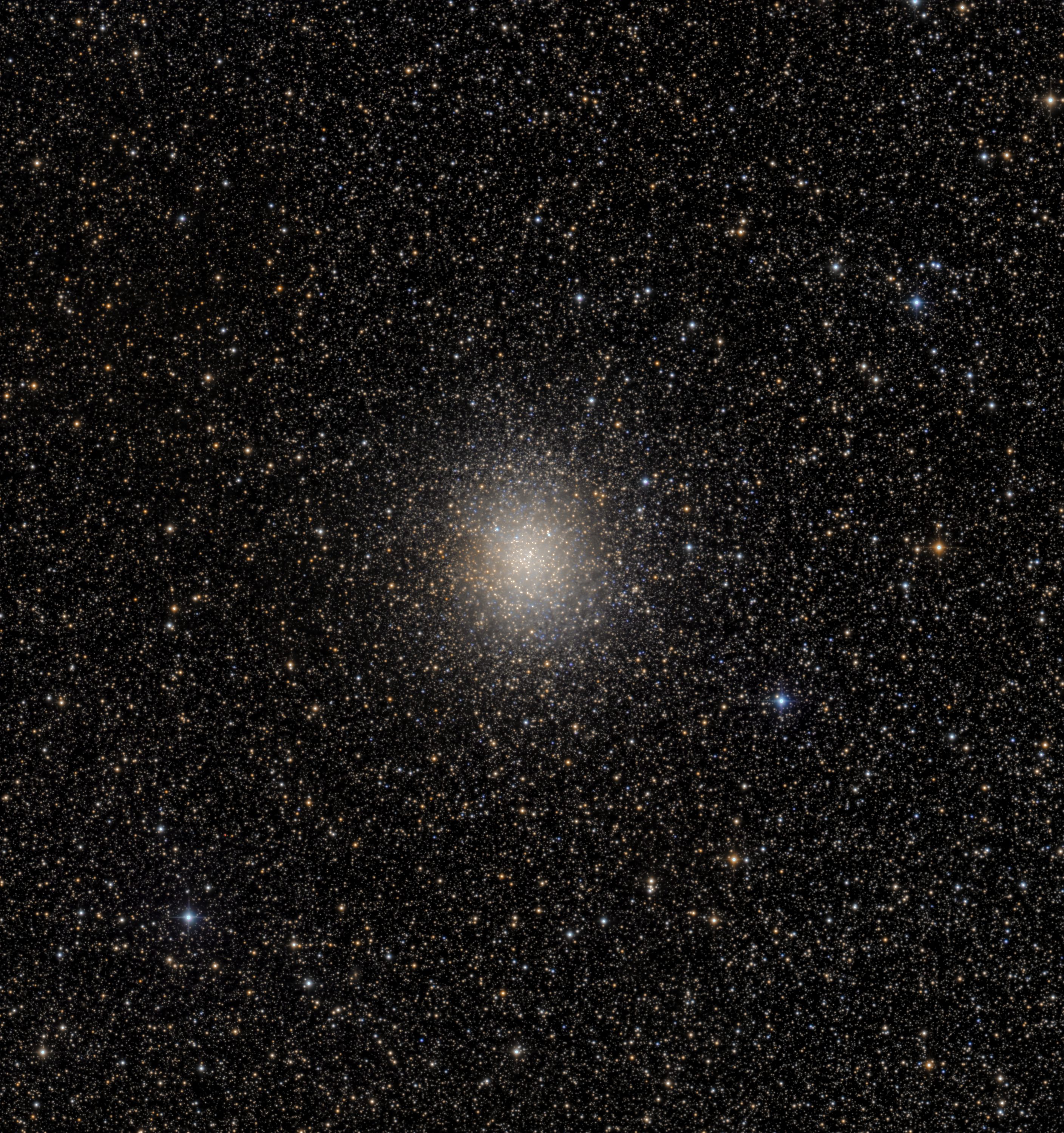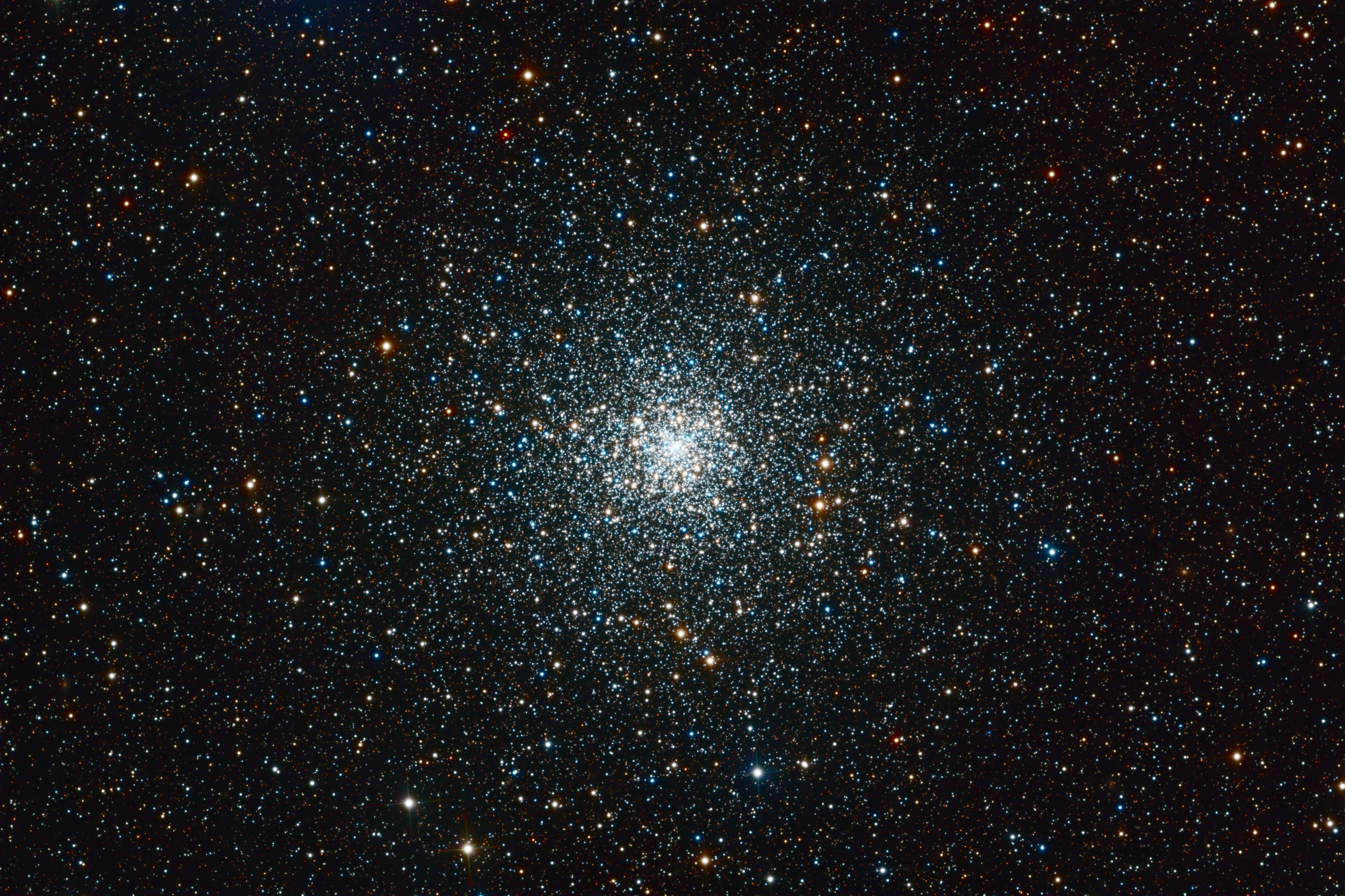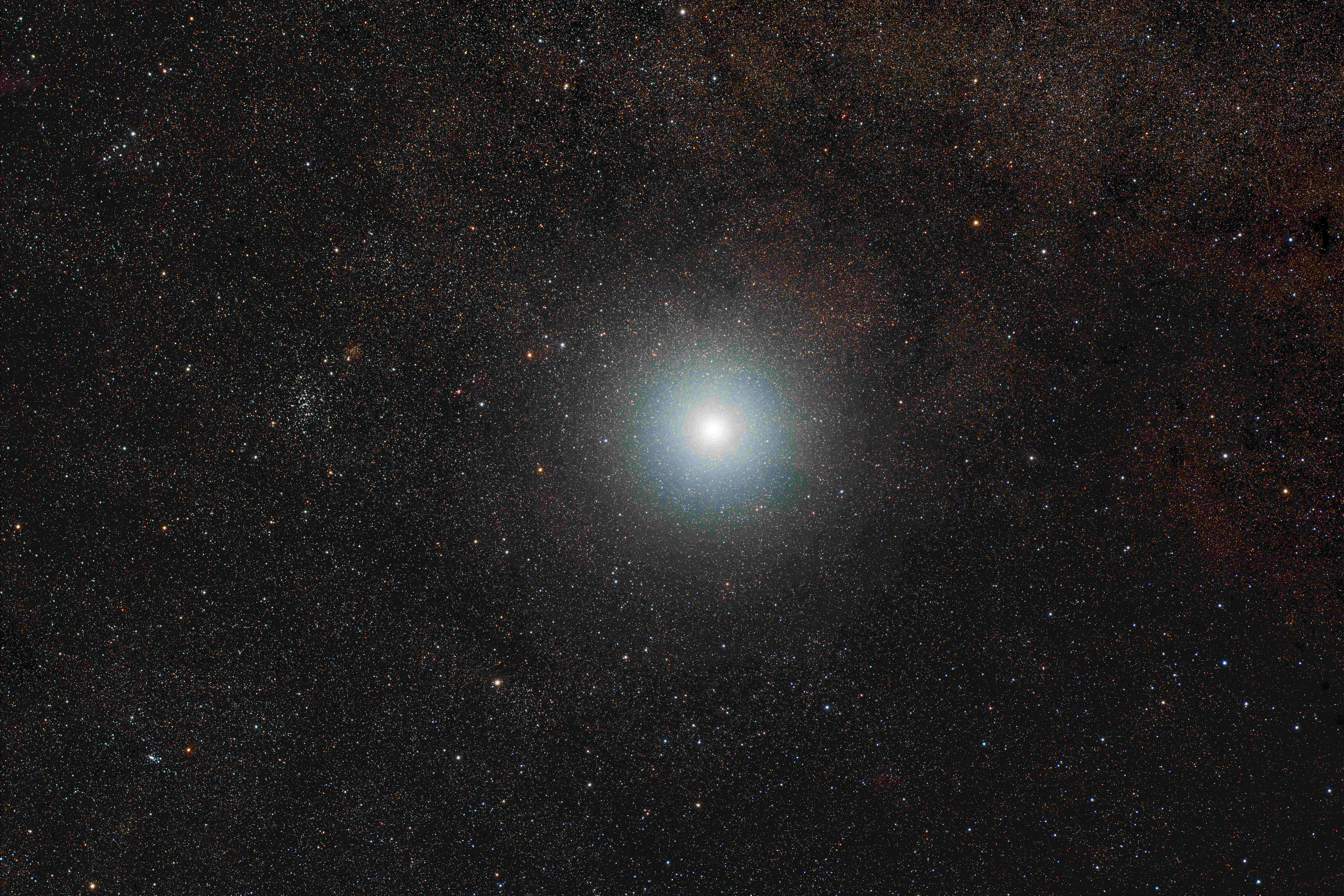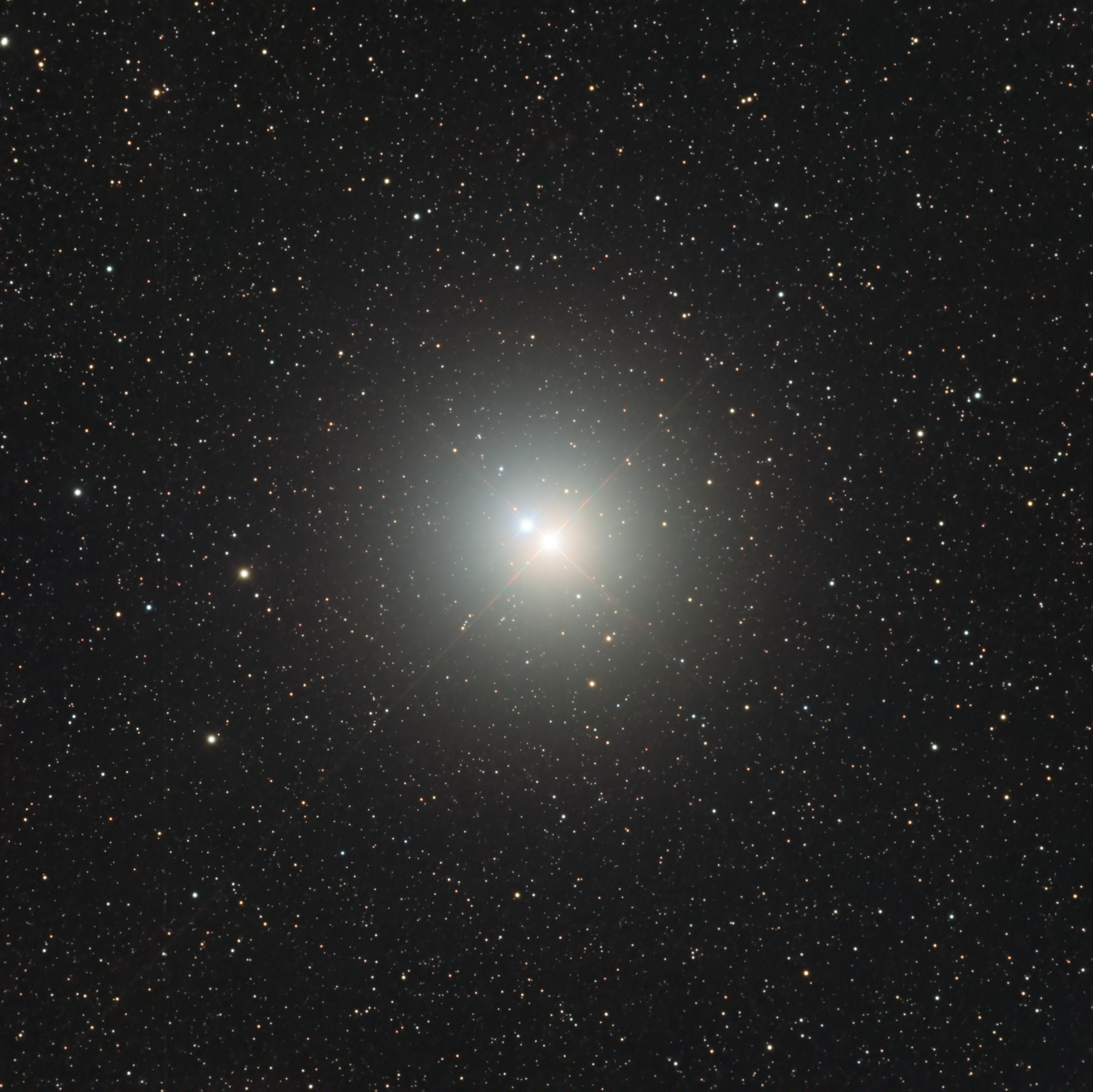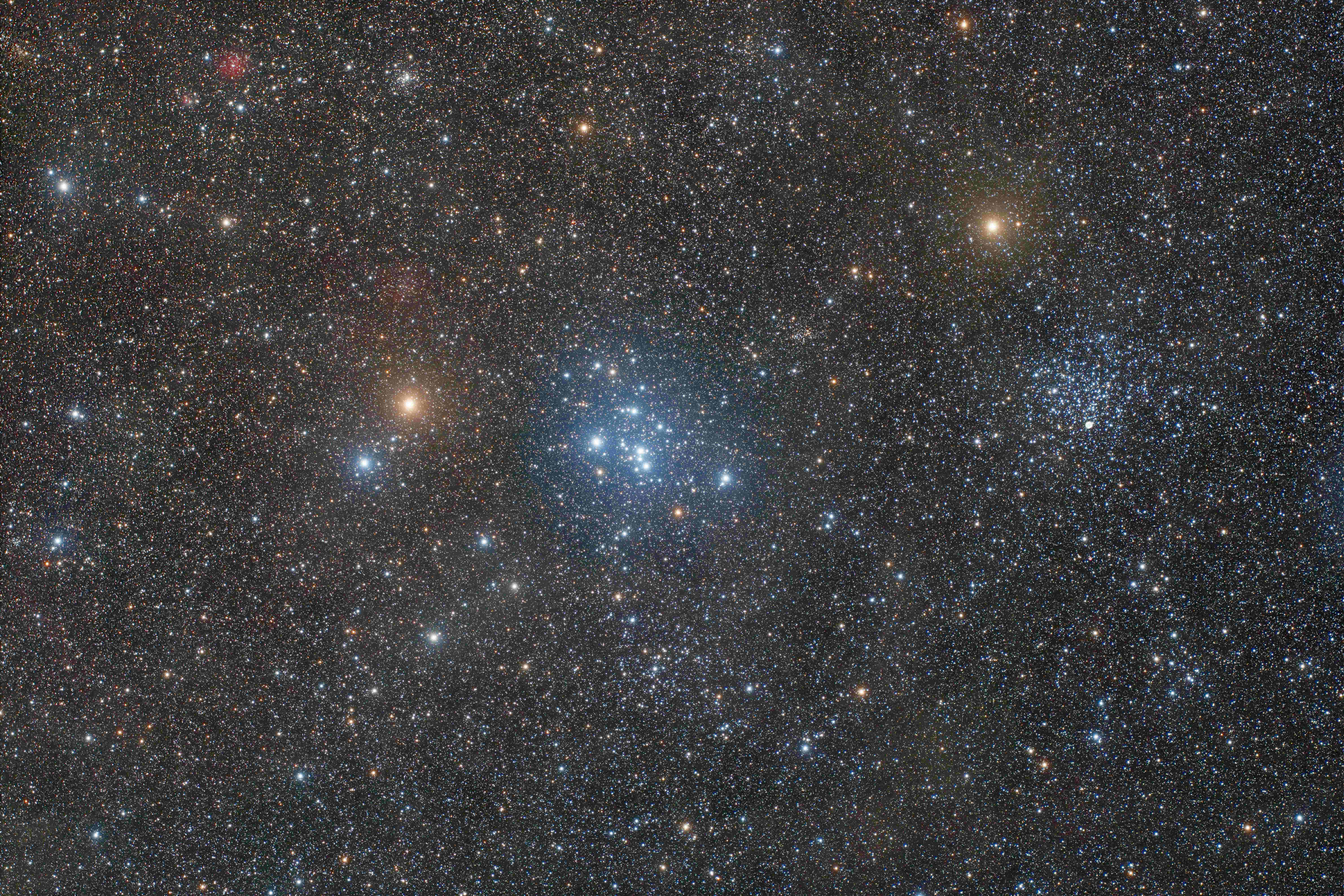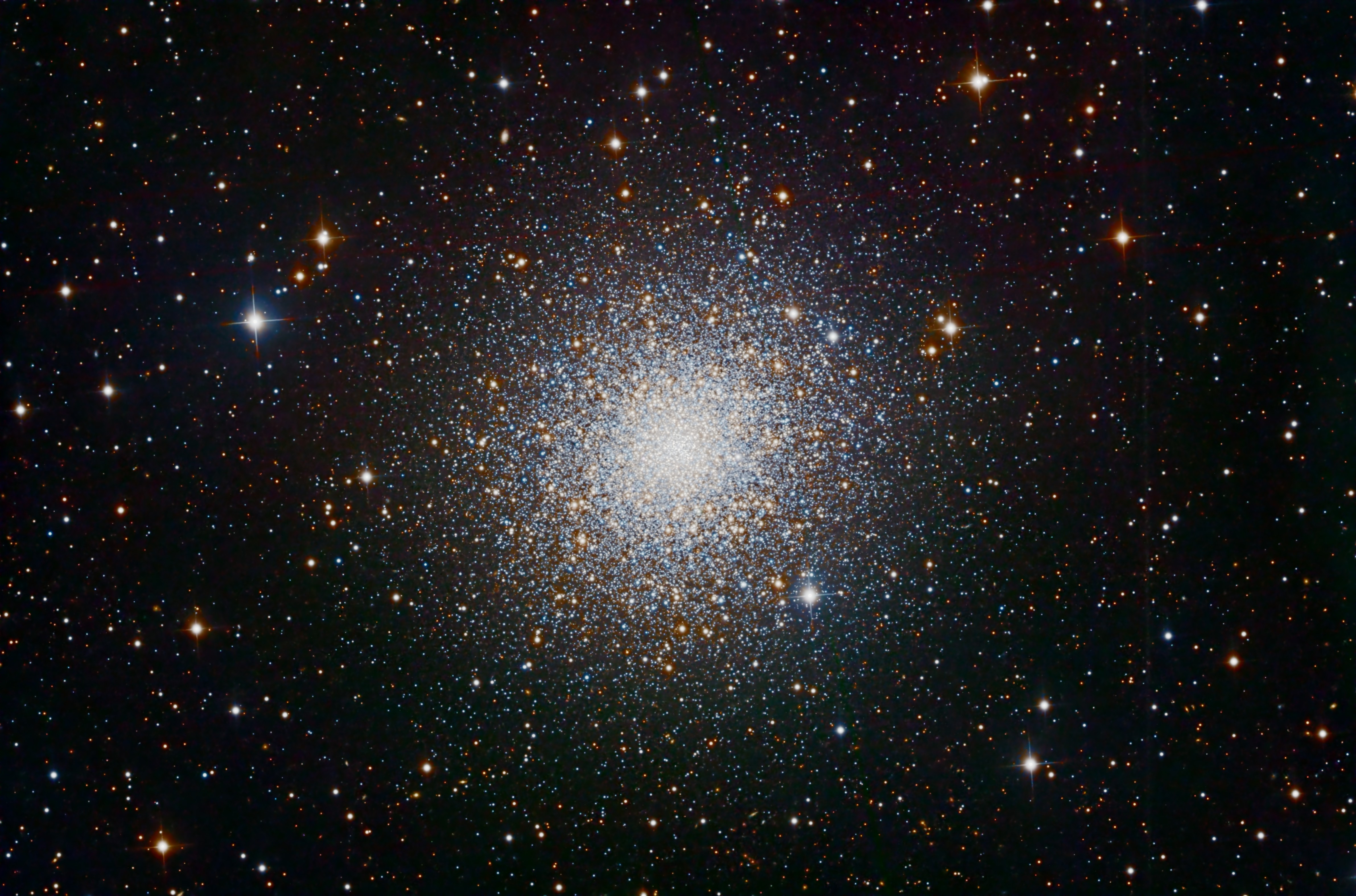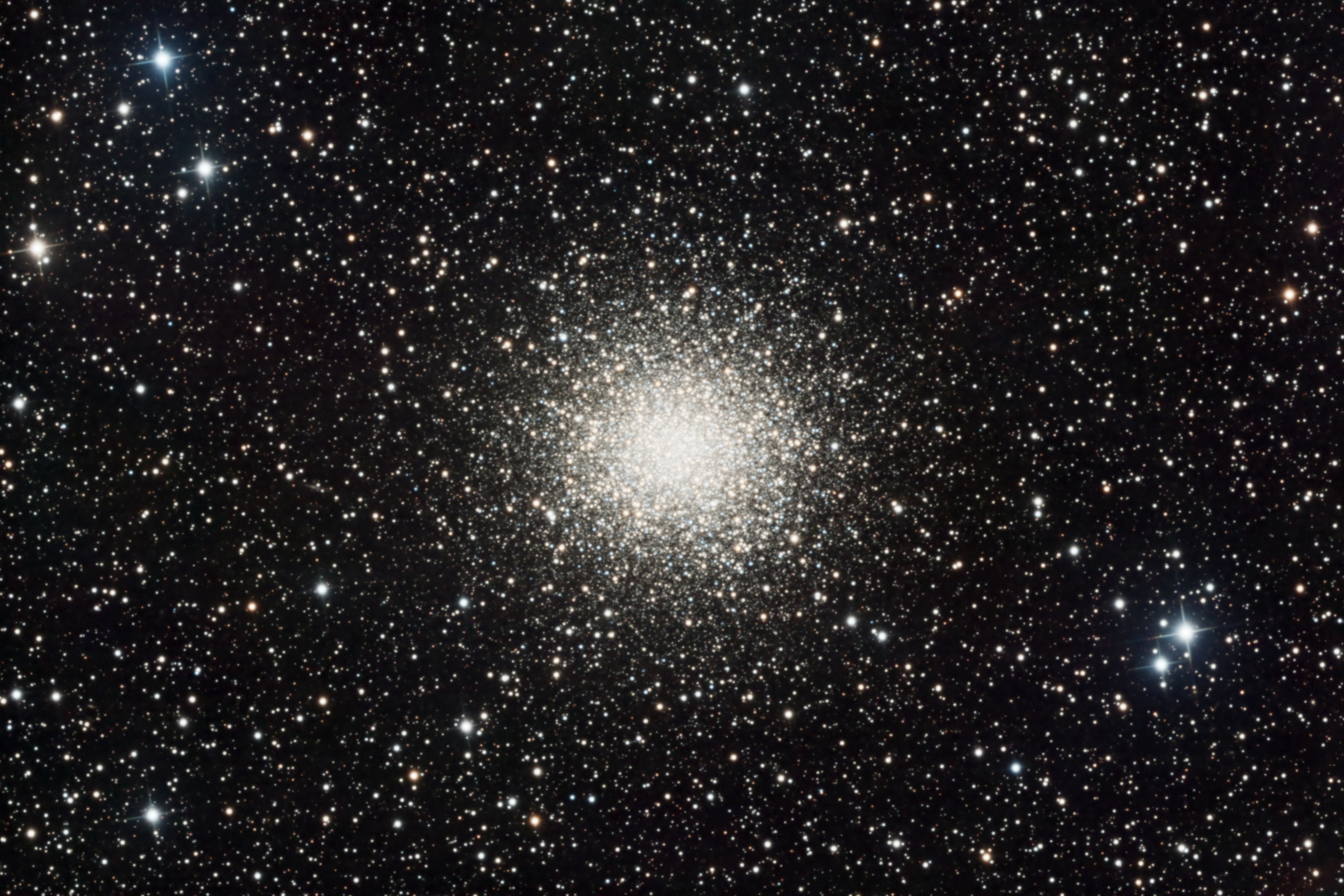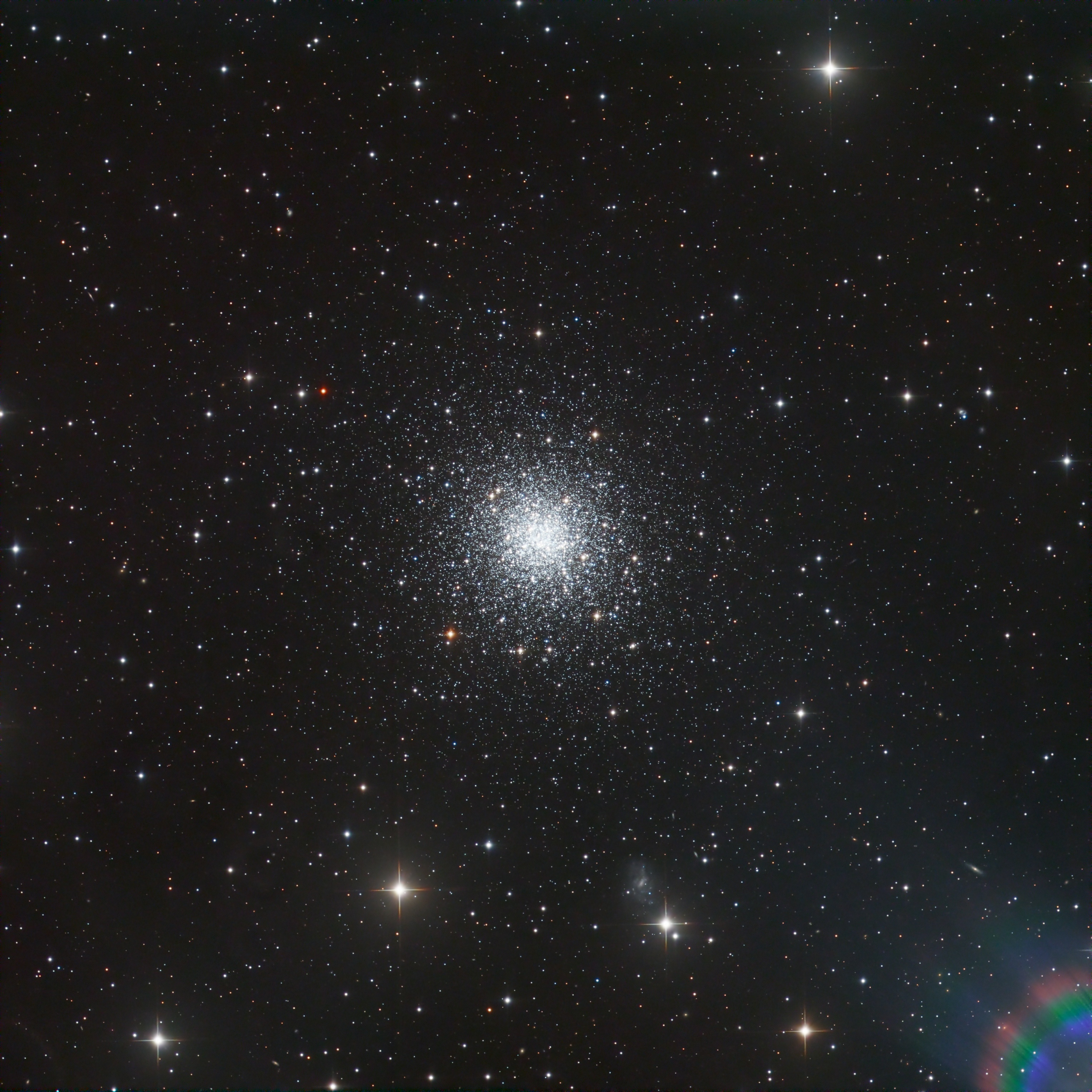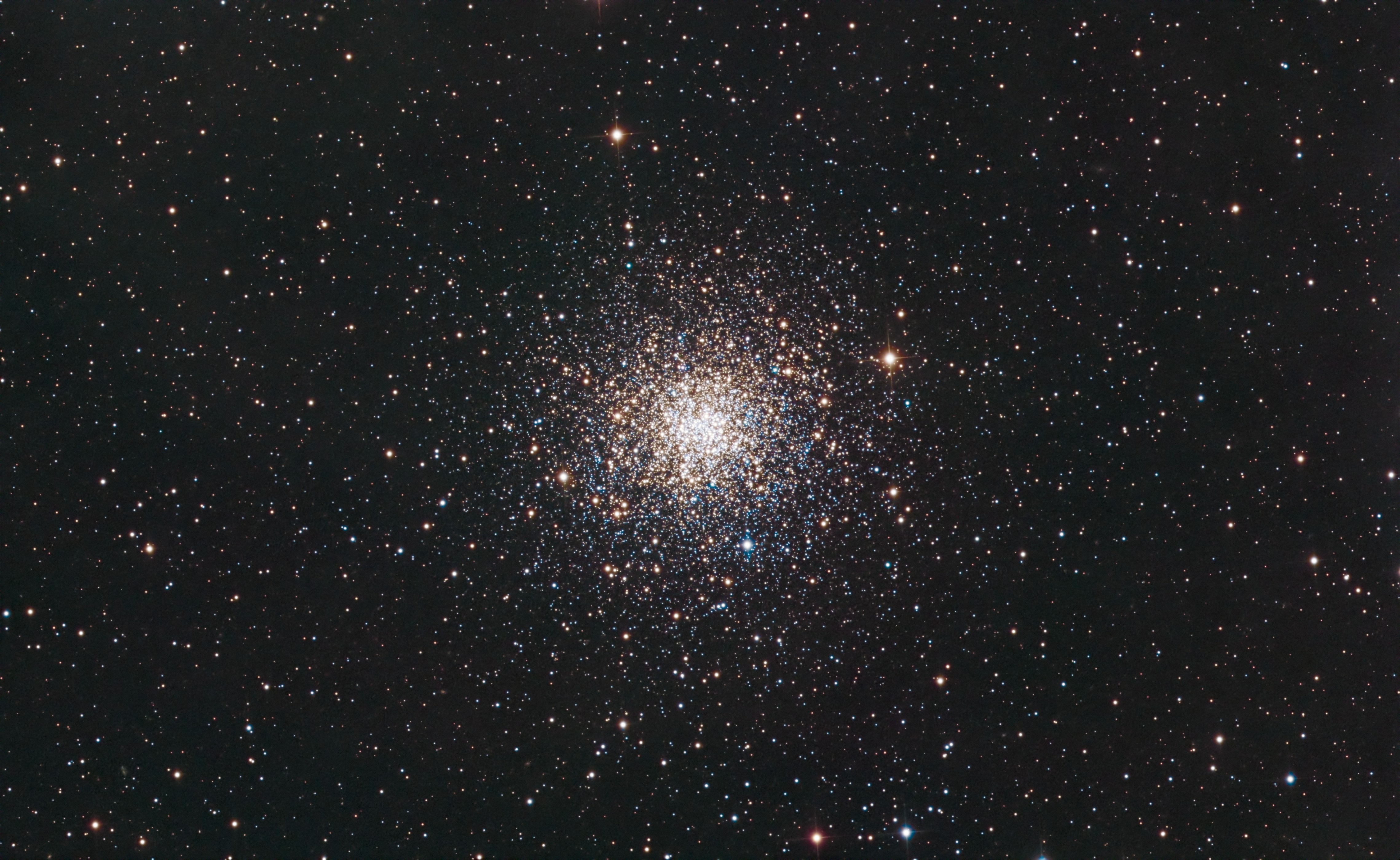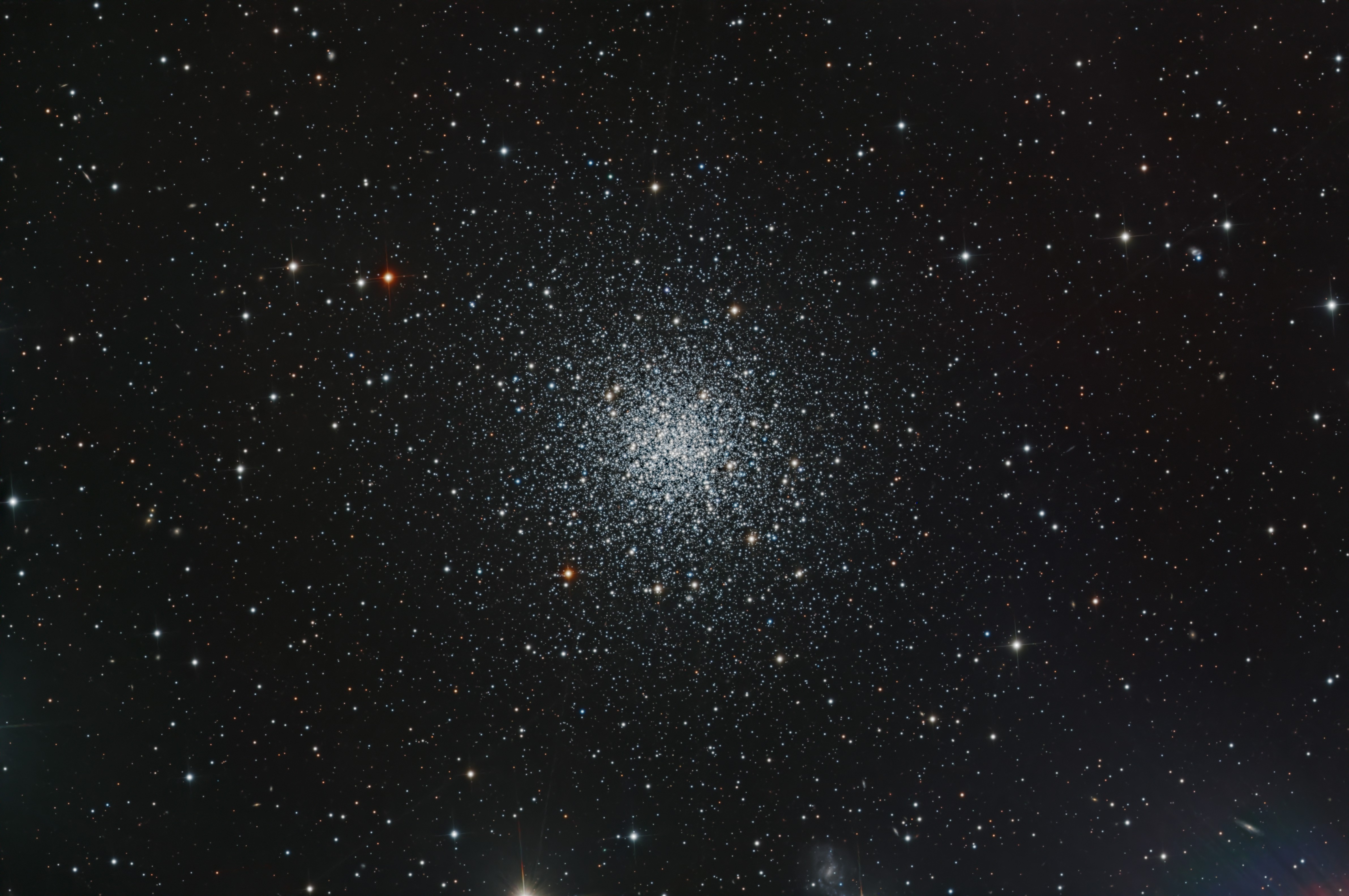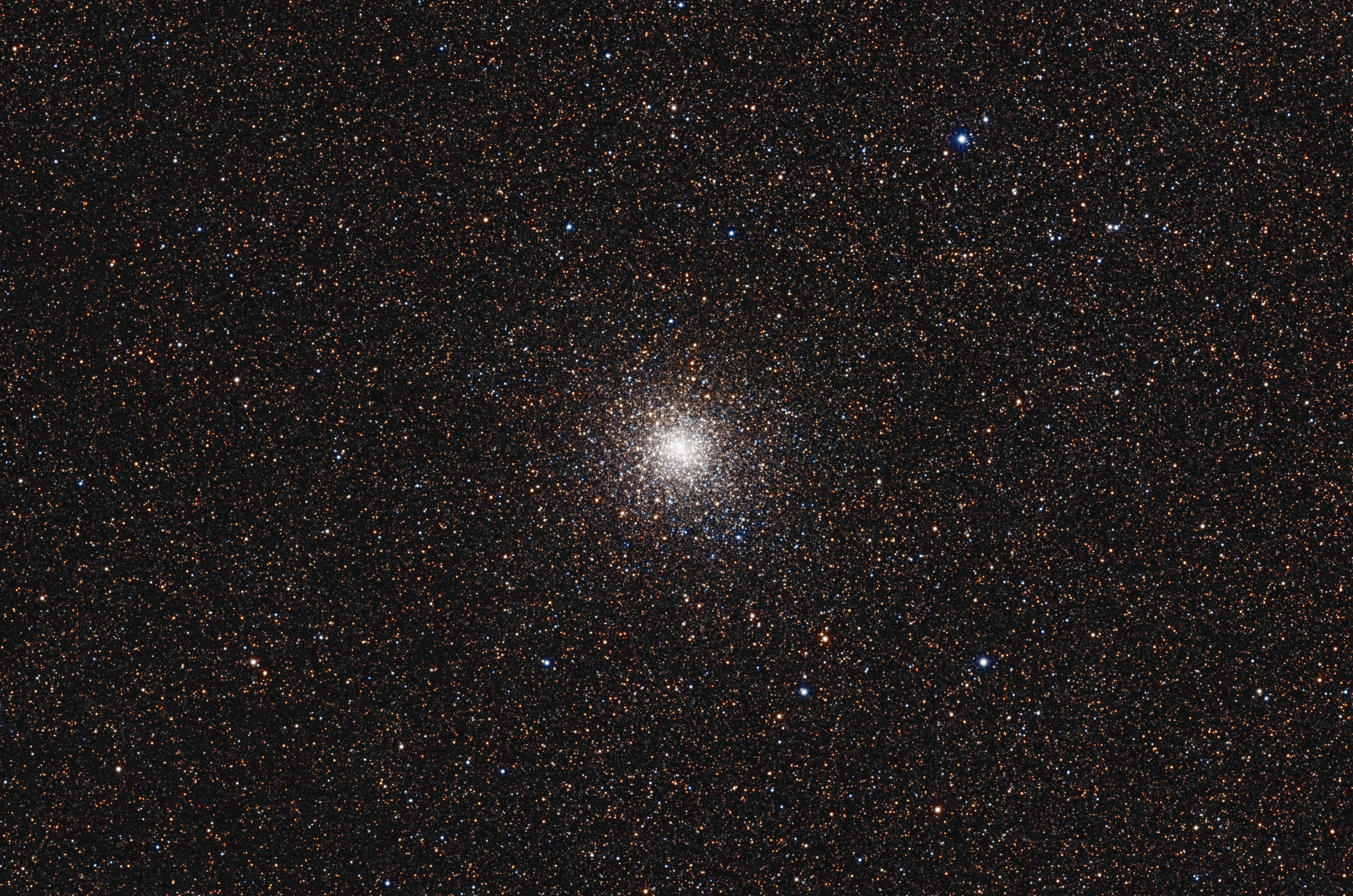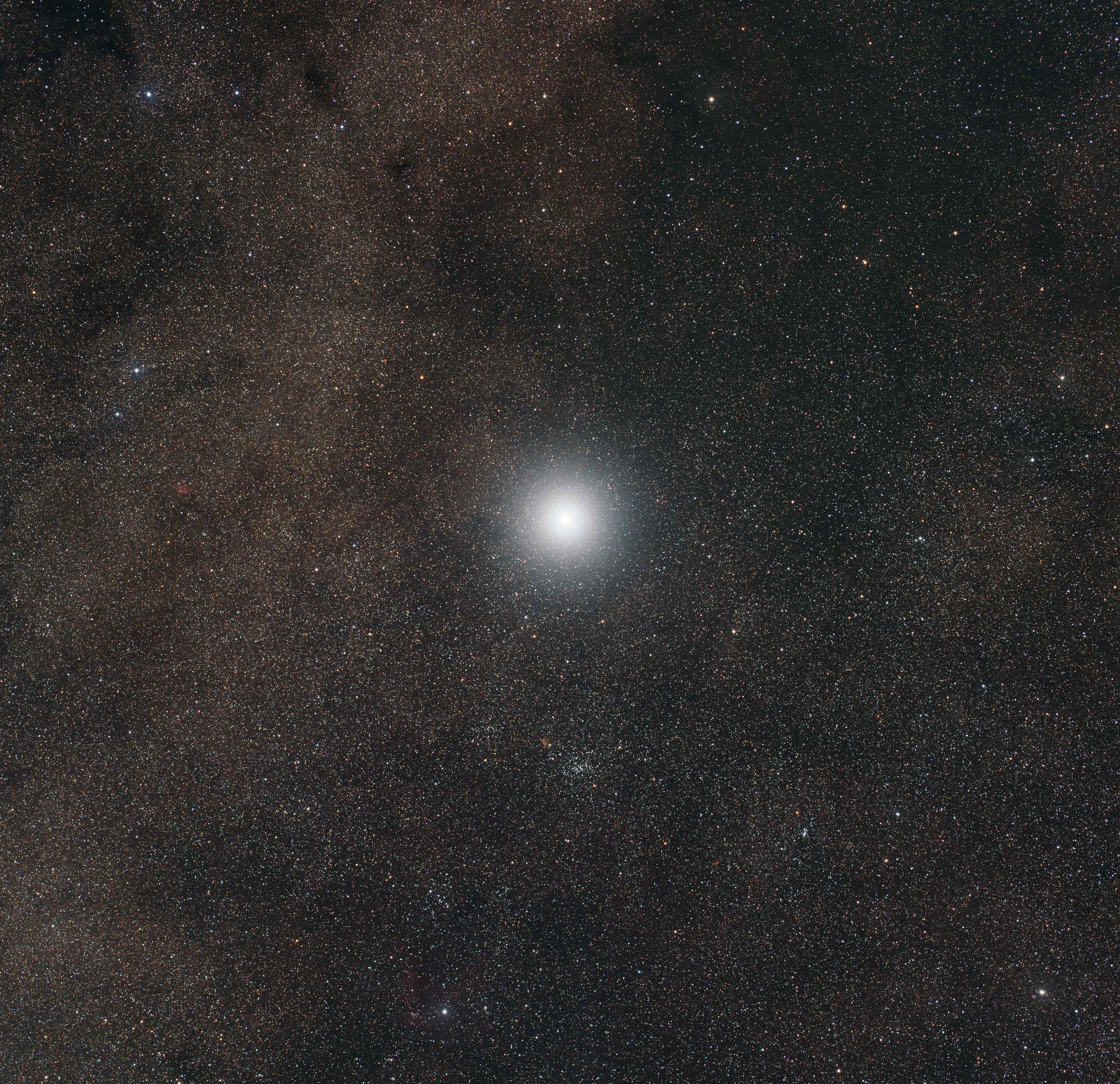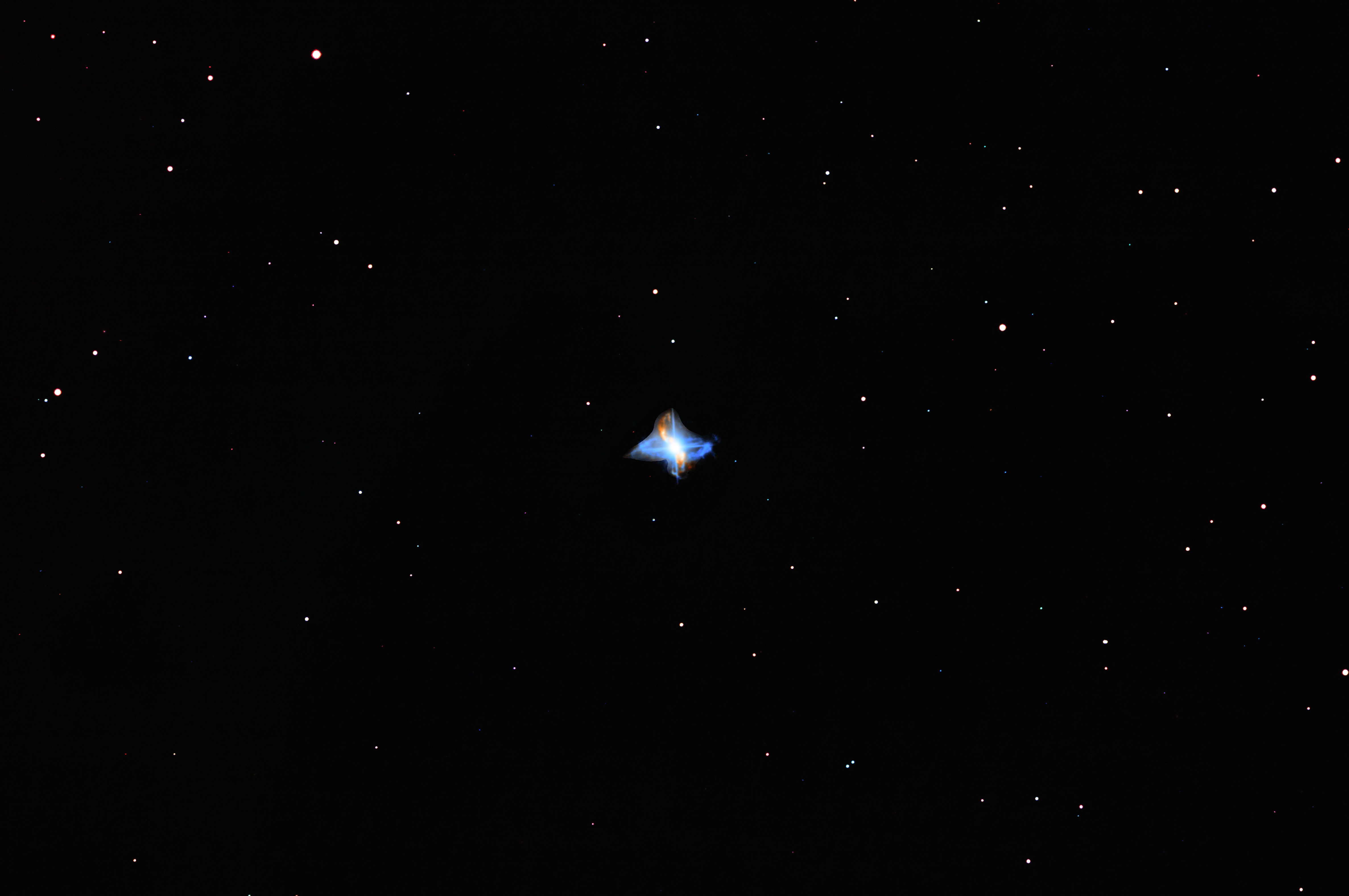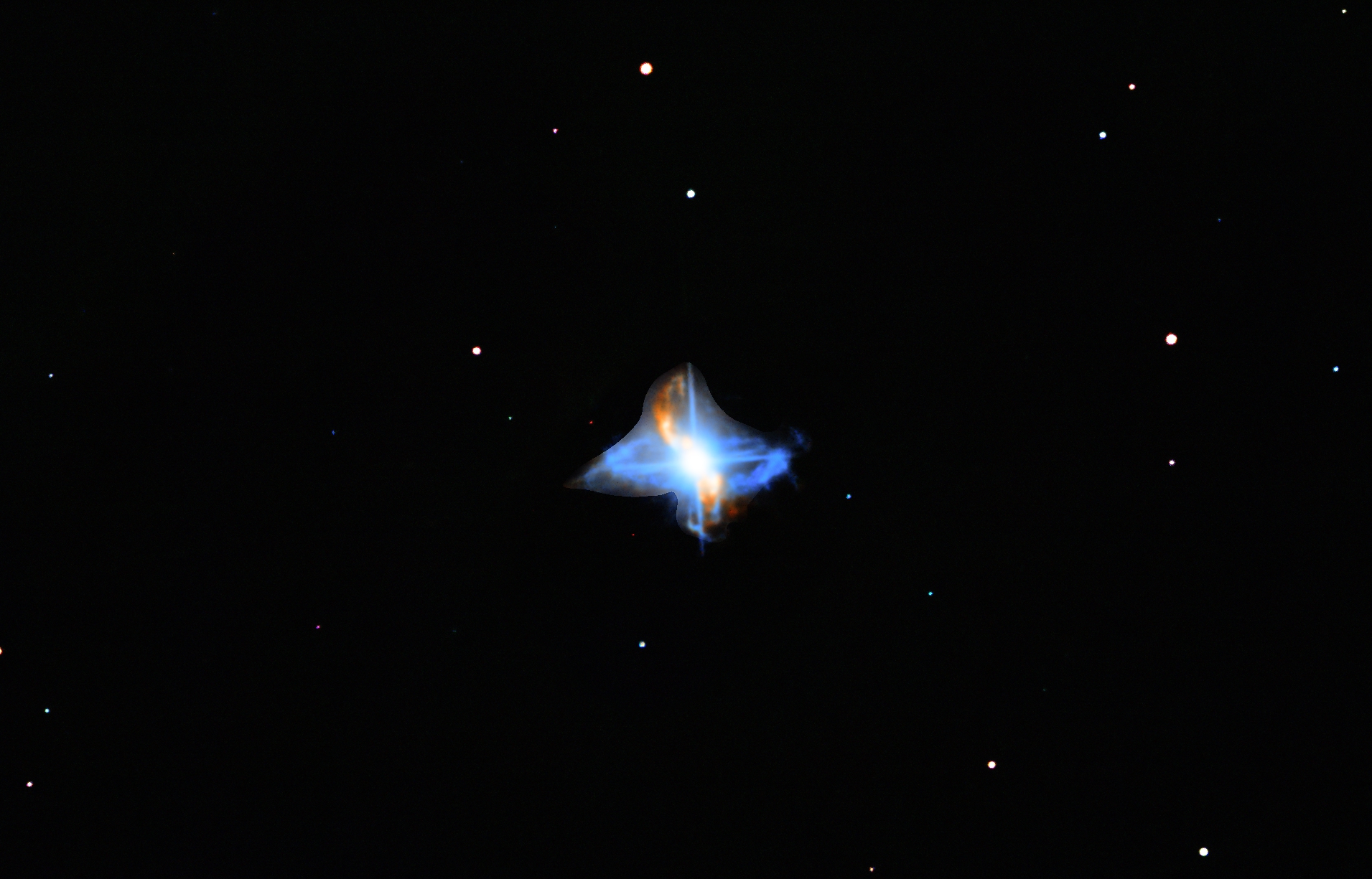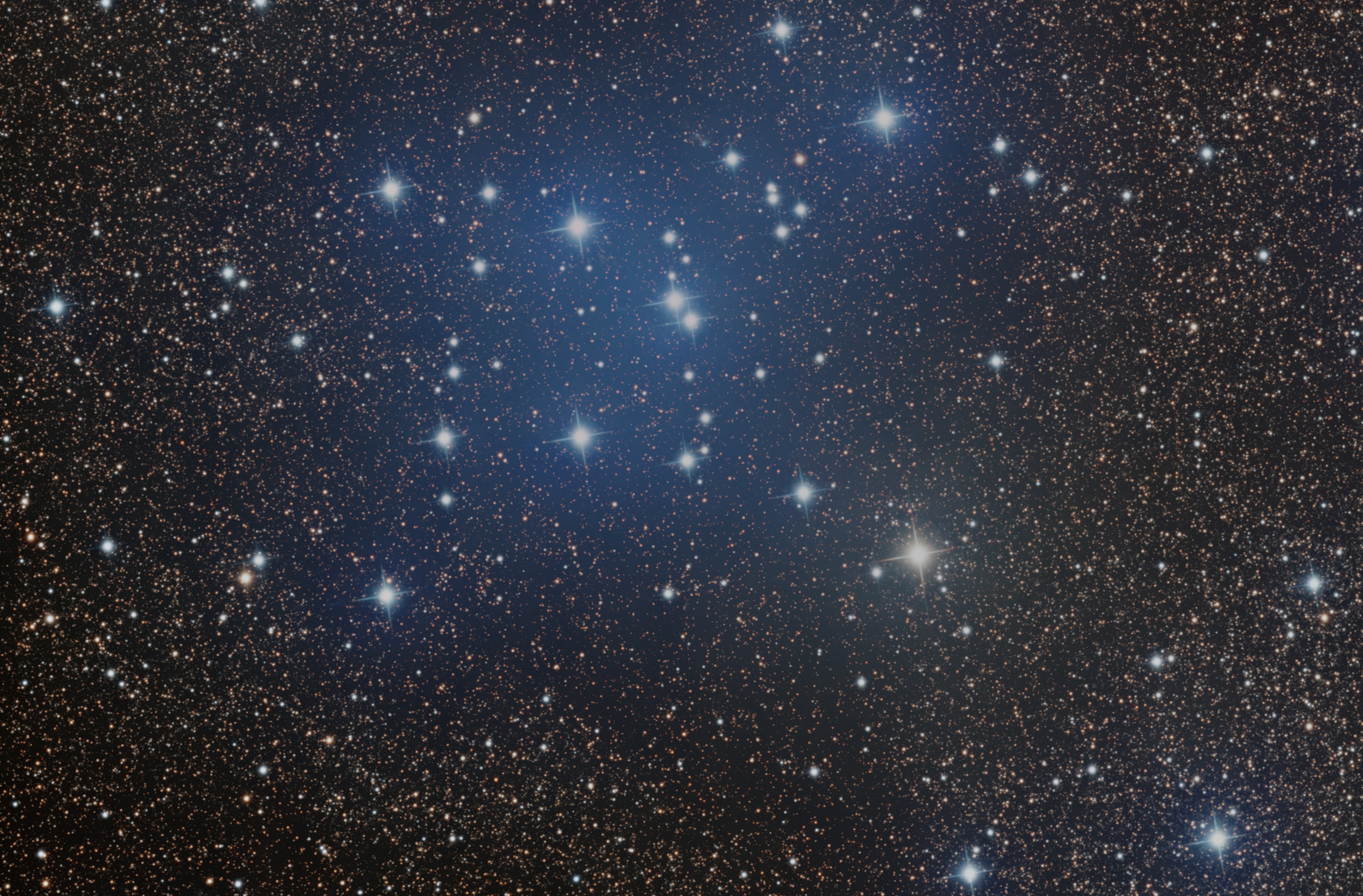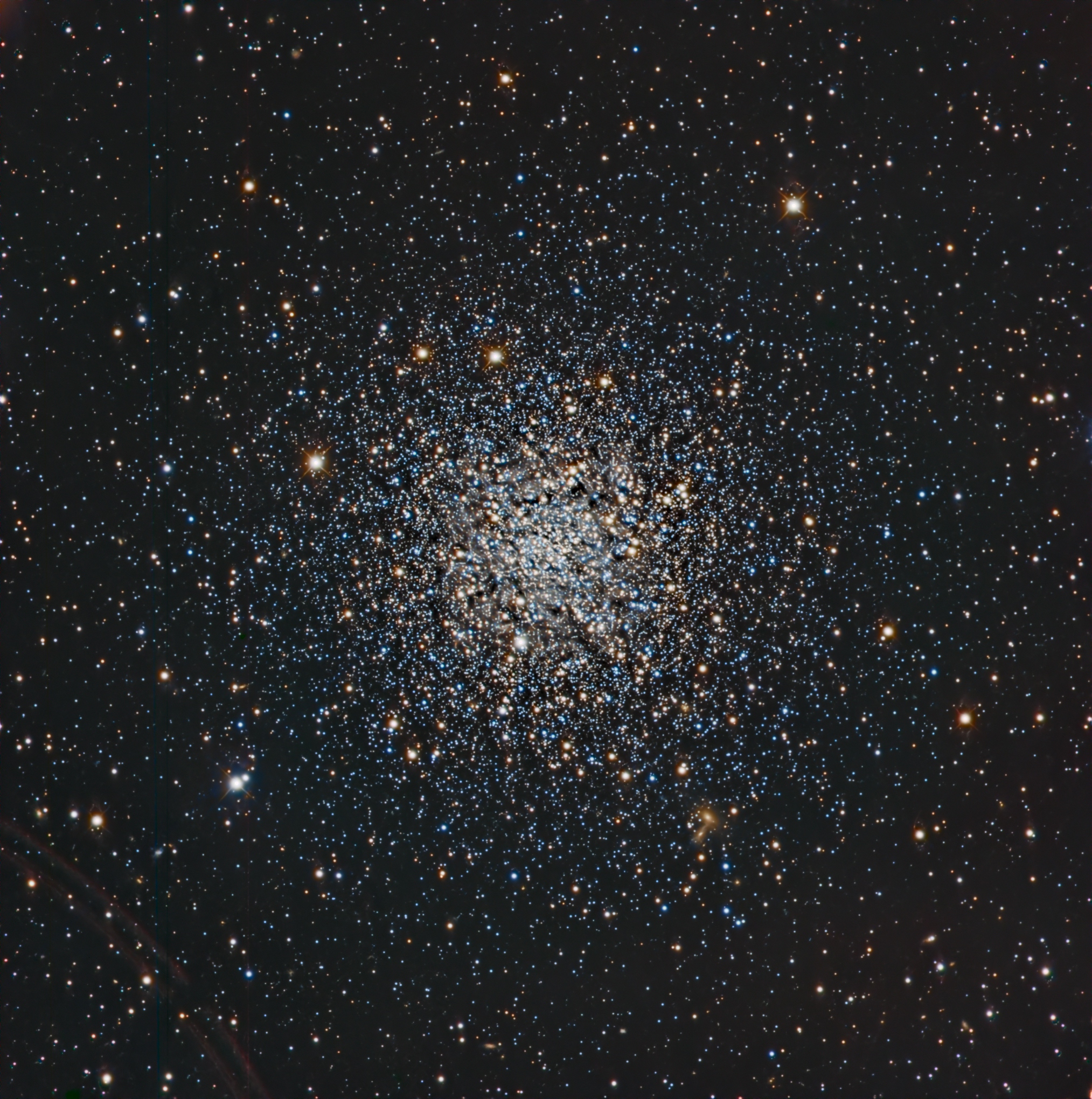| NGC
5139 - Omega Centauri Omega Centauri was first cataloged by Ptolemy in Greece in 150 A.D. At a distance of 16,000 light years and a diameter of 150 light years, it is the most massive globular cluster in the Milky Way. It is estimated to contain around 10 million stars and has a total mass of 4 million solar masses. The stars in the core of Omega Centauri are so crowded that they are estimated to average only 0.1 light years away from each other. It has been speculated that Omega Centauri is the core of a dwarf galaxy that was disrupted and absorbed by the Milky Way. Image processed by Ron Yelton, original data from Telescope Live |
NGC 104 This globular cluster was first recorded in 1751-2 by Nicolas-Louis de Lacaille, who initially thought it was the nucleus of a bright comet, and later added to the Messier list as Messier 1 by Charles Messier. In the constellation Tucana, and lying 13,000 light-years away, NGC 104 (47 Tucanae) is the second brightest globular cluster behind Omega Centauri. Current thinking is that this globular cluster contains about 10,000 stars and may be around 13 billion years old, which is unusually old. This cluster contains numerous x-ray sources and also has 25 known millisecond pulsars. In December 2008, Ragbir Bhathal of the University of Western Sydney claimed the detection of a strong laser-like signal from the direction of 47 Tucanae. Image processed by Ron Yelton, original data from Telescope Live |
Nicolas Louis de Lacaille first discovered this open cluster in the constellation Crux back in 1751-52 while populating his catalog at the Cape of Good Hope in South Africa. The cluster was later named The Jewel Cluster by John Herschel, who described it as "a superb piece of fancy jewelry." Herschel recorded over 100 members of this cluster in 1834-1838. Its age is estimated at around 14 million yrs. and is the youngest known cluster. It lies about 6,400 light-years from Earth. Image processed by Ron Yelton, original data from Telescope Live |
|
Location: El Sauce Observatory,
Chile Date: January 1, 2020 Mount: Mathis MI-1000 Telescope: Planewave CDK24 f/6.6 Camera: FLI PL9000 @ -25c (CHI-1) Exposure: 3 x 5min each for RGB. Total 15 min. |
Location: El Sauce Observatory, Chile Date: October 21, 2020 Mount: ASA DDM85 Telescope: ASA 500N Camera: FLI PL16803 @-25 (CHI-2 50mm) Exposure: 6 x 3min each for RGB. Total: 1 hr. |
Location: El Sauce Obs, Chile Date: April 9, 2021 Mount: Mathis MI-1000/1250 Telescope: Planewave CDK24 Camera: FLI ProLine PL 9000 @-25 (CHI-1) Exposure: 6 x 5 min RGB Total: 30 min |
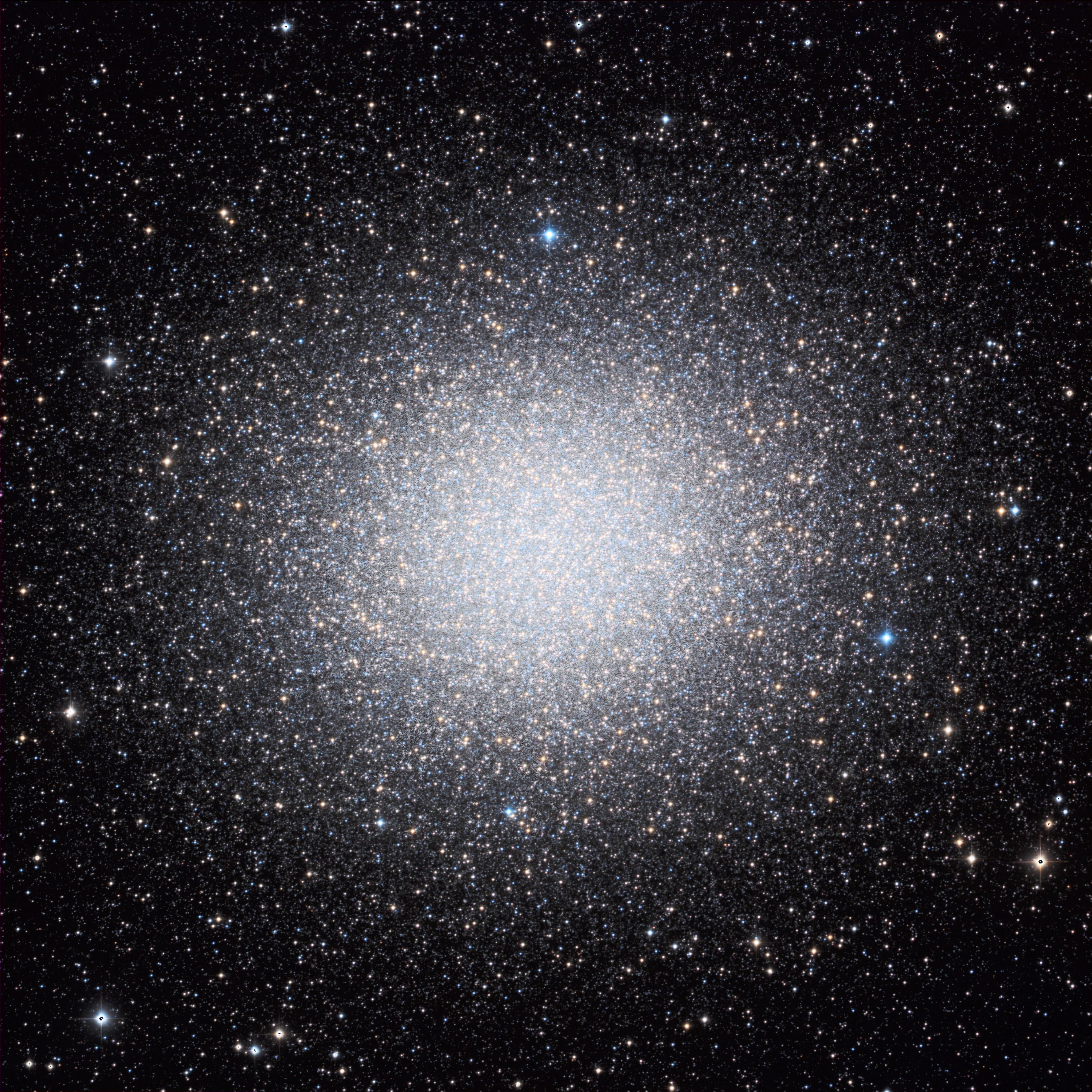 |
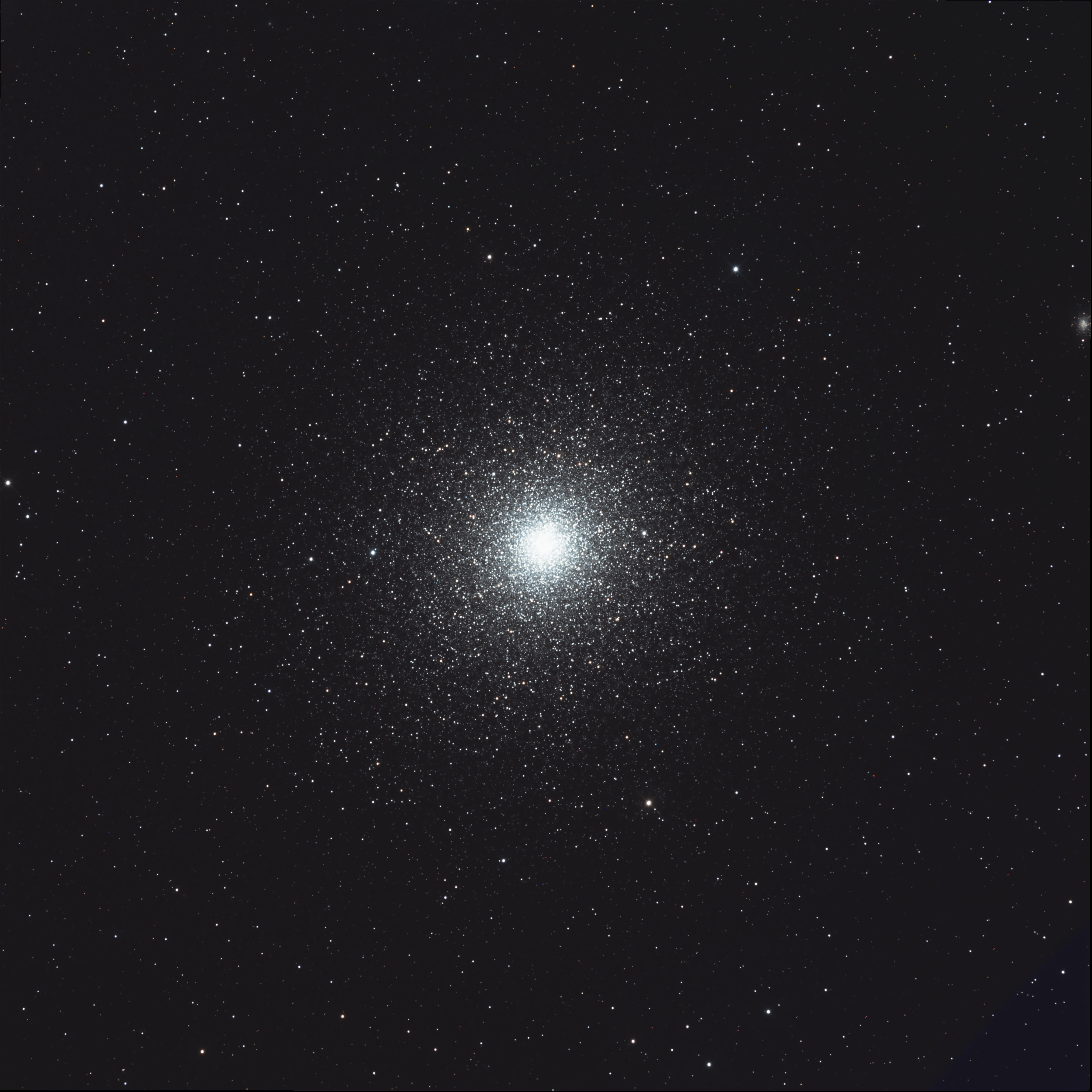 |
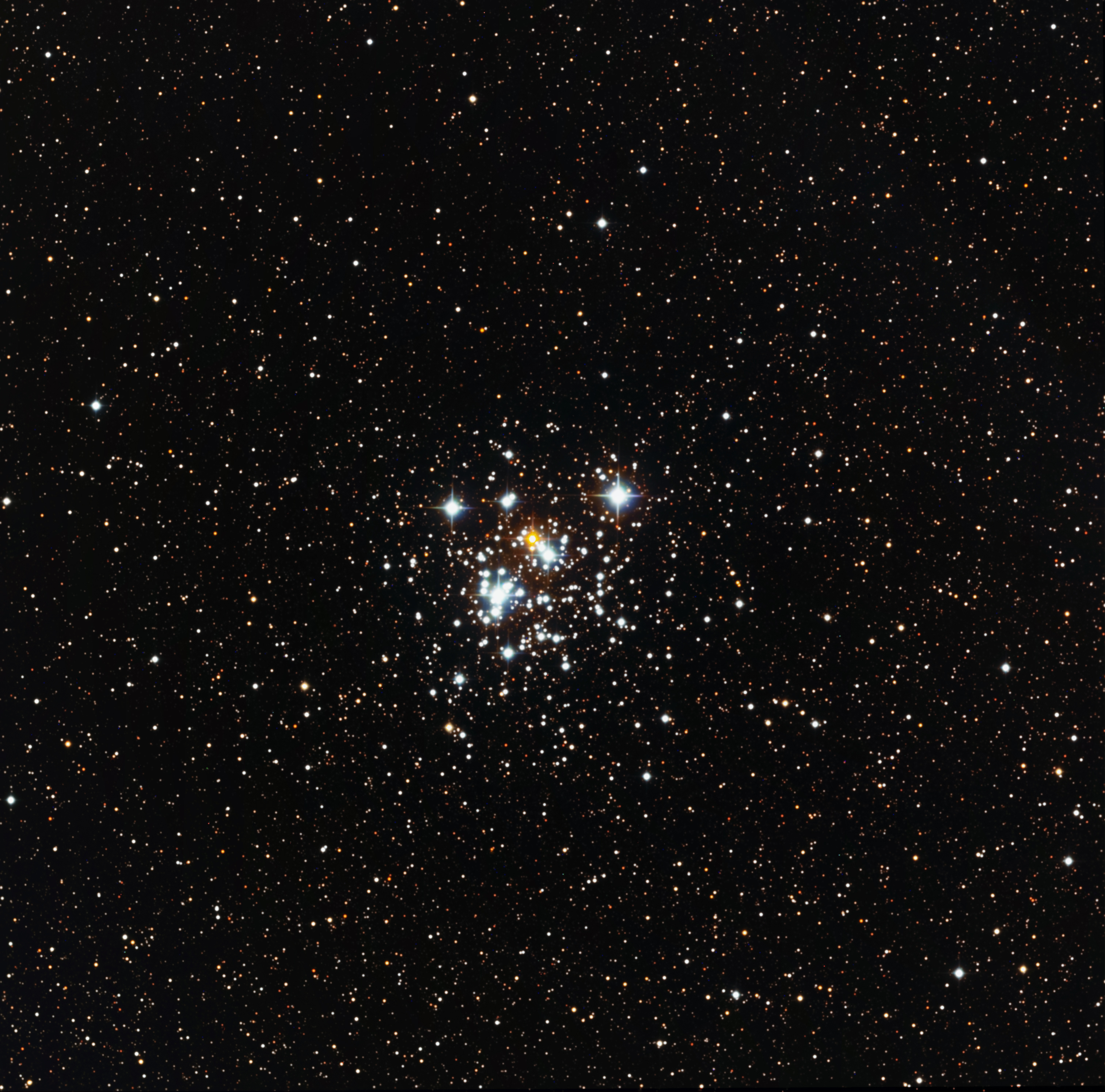 |
